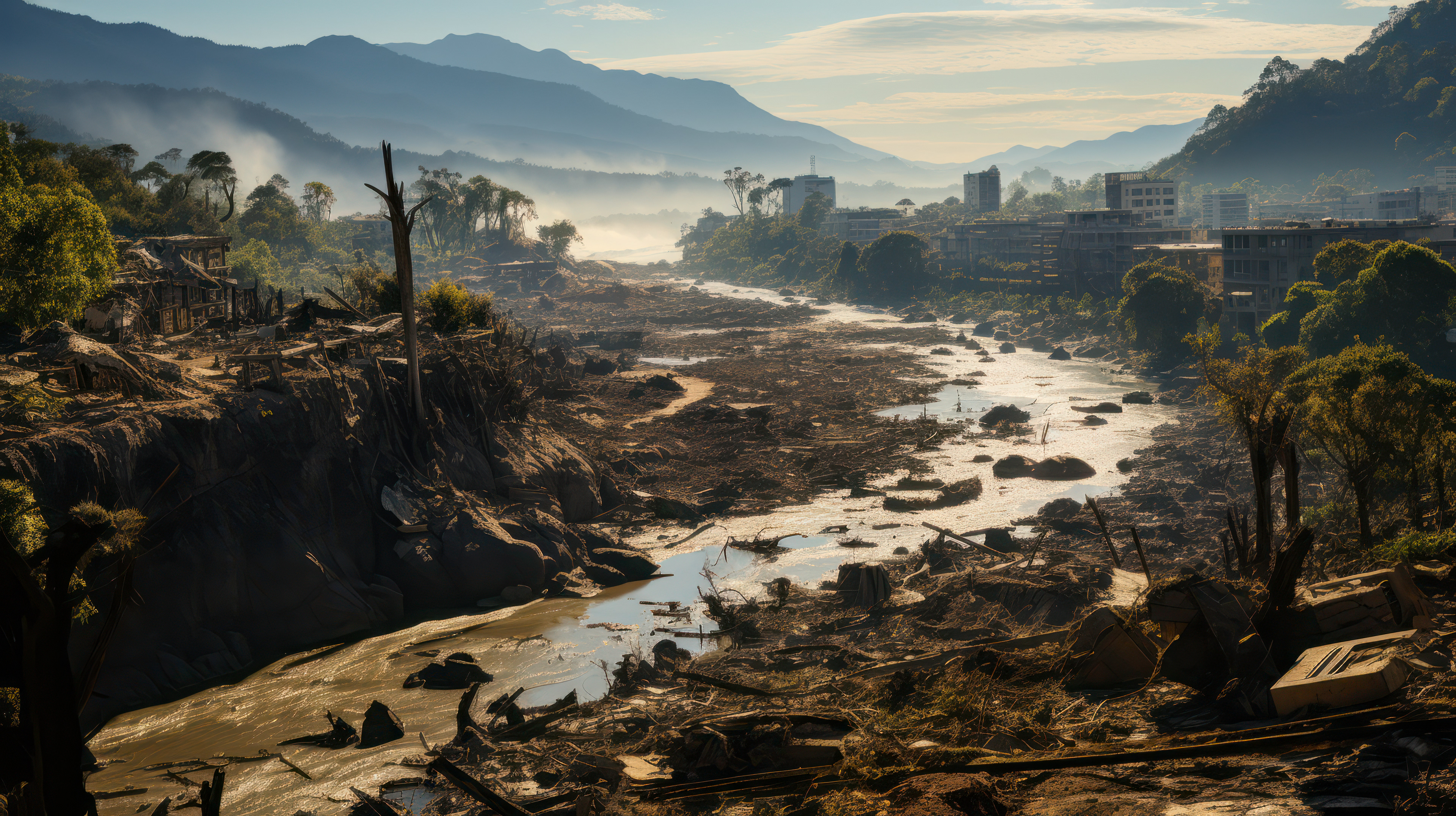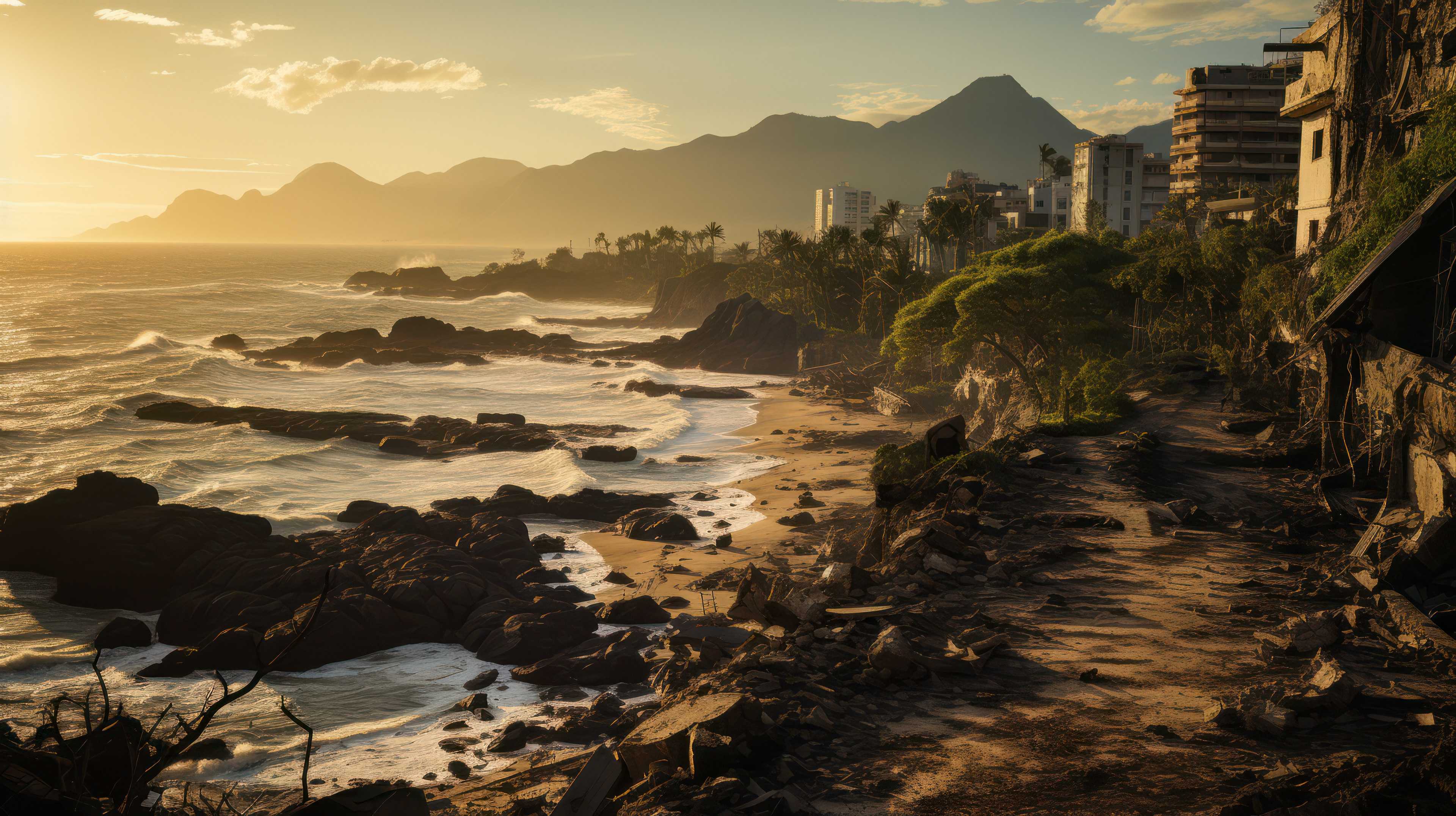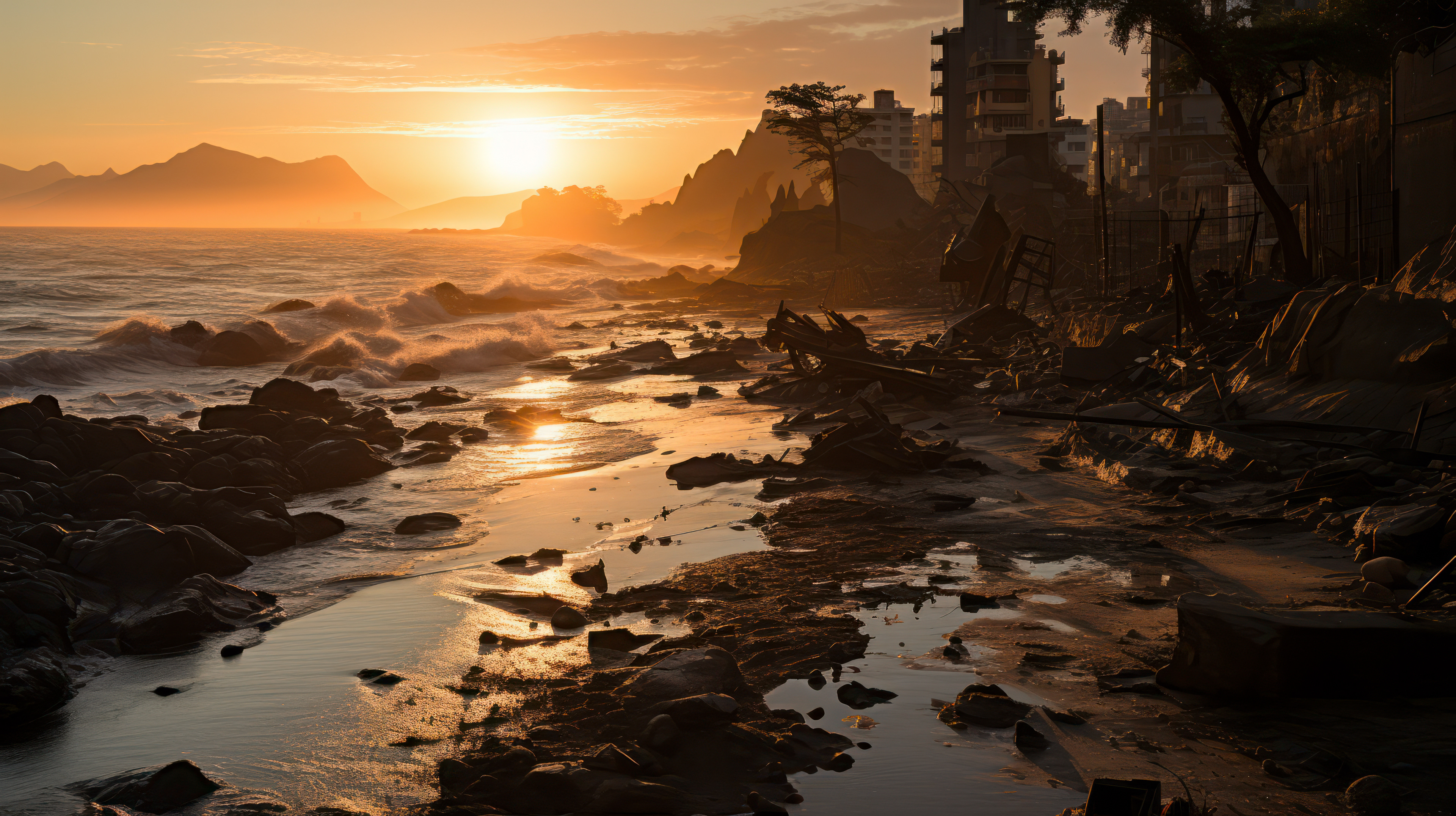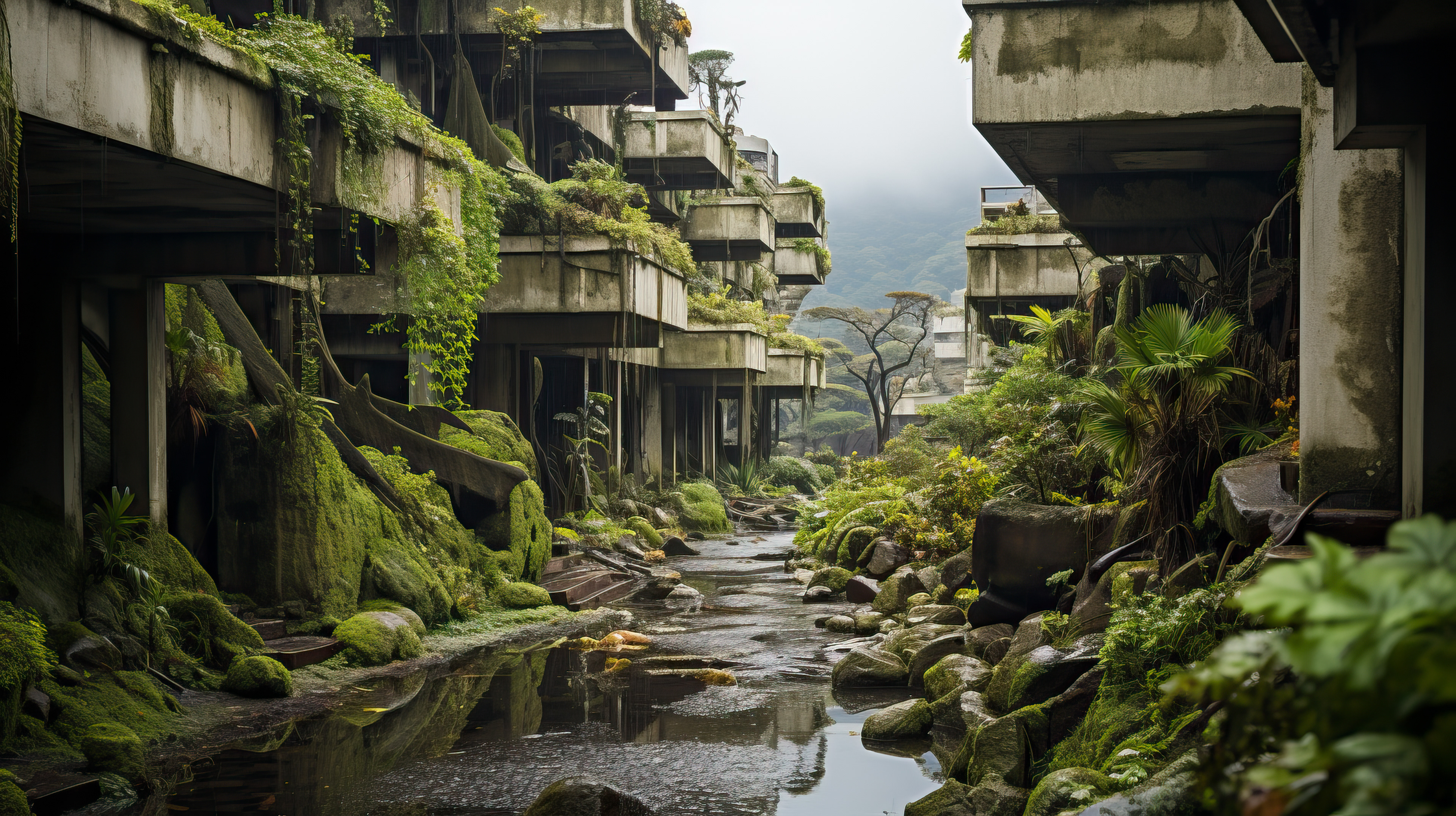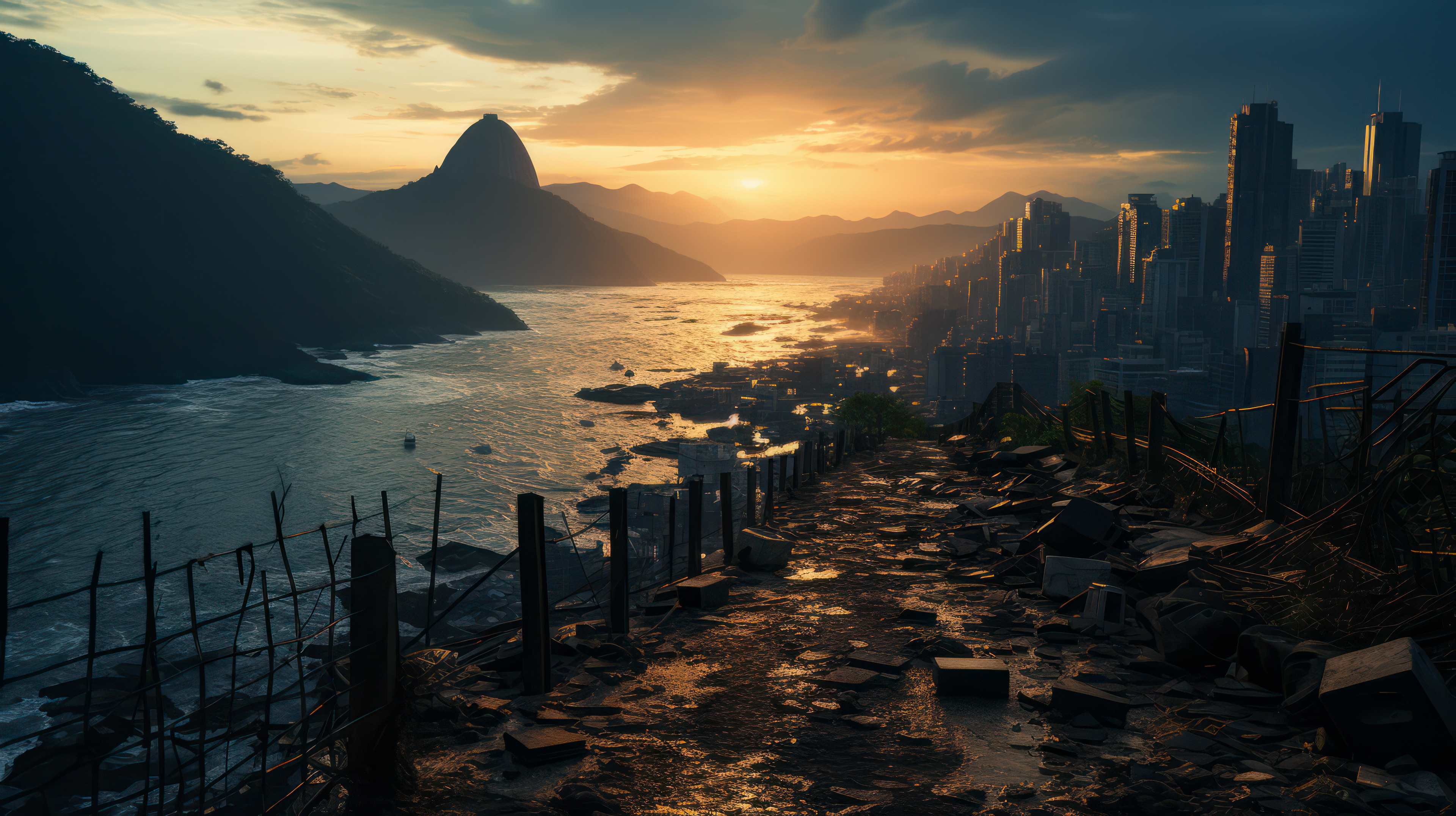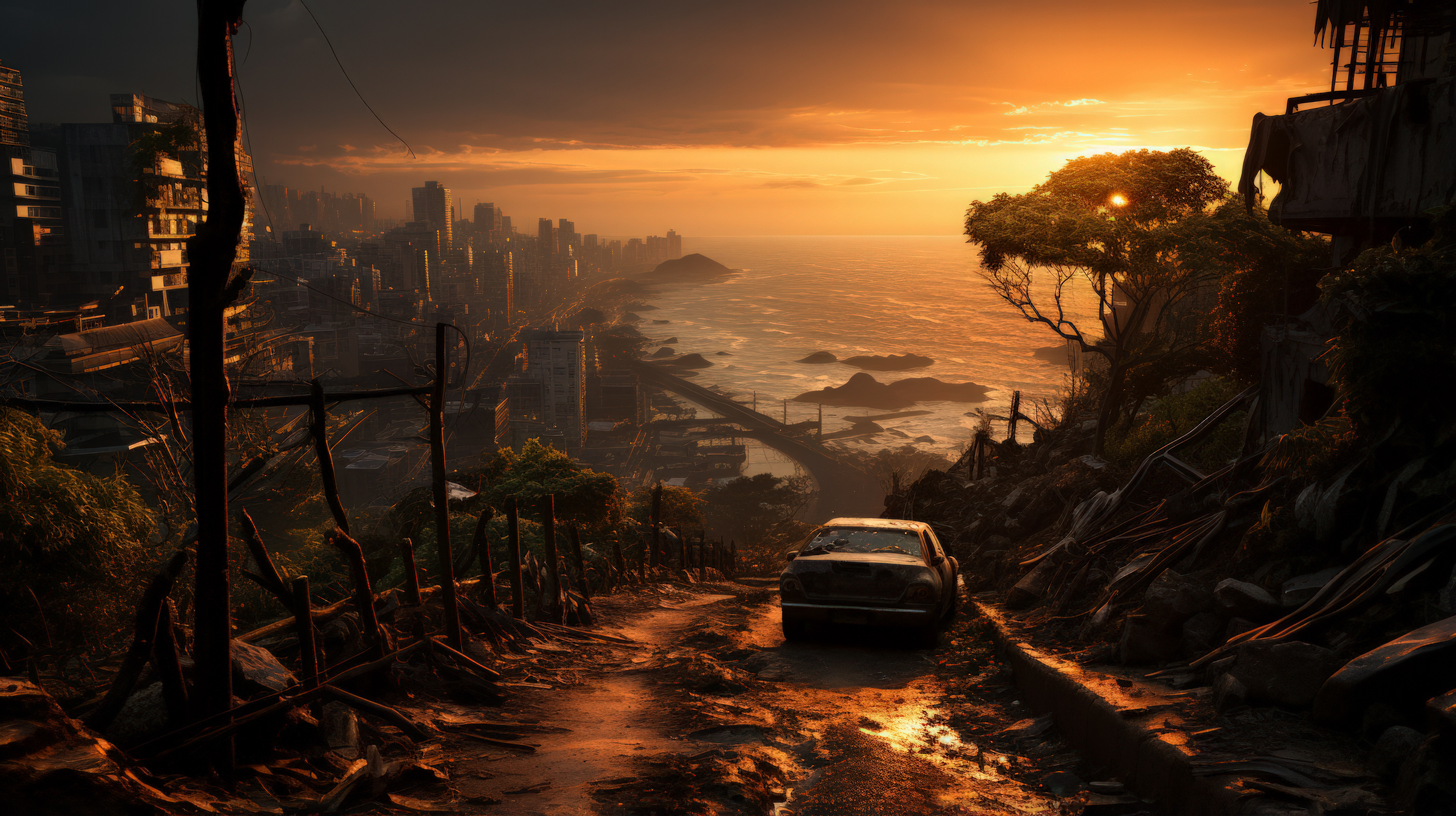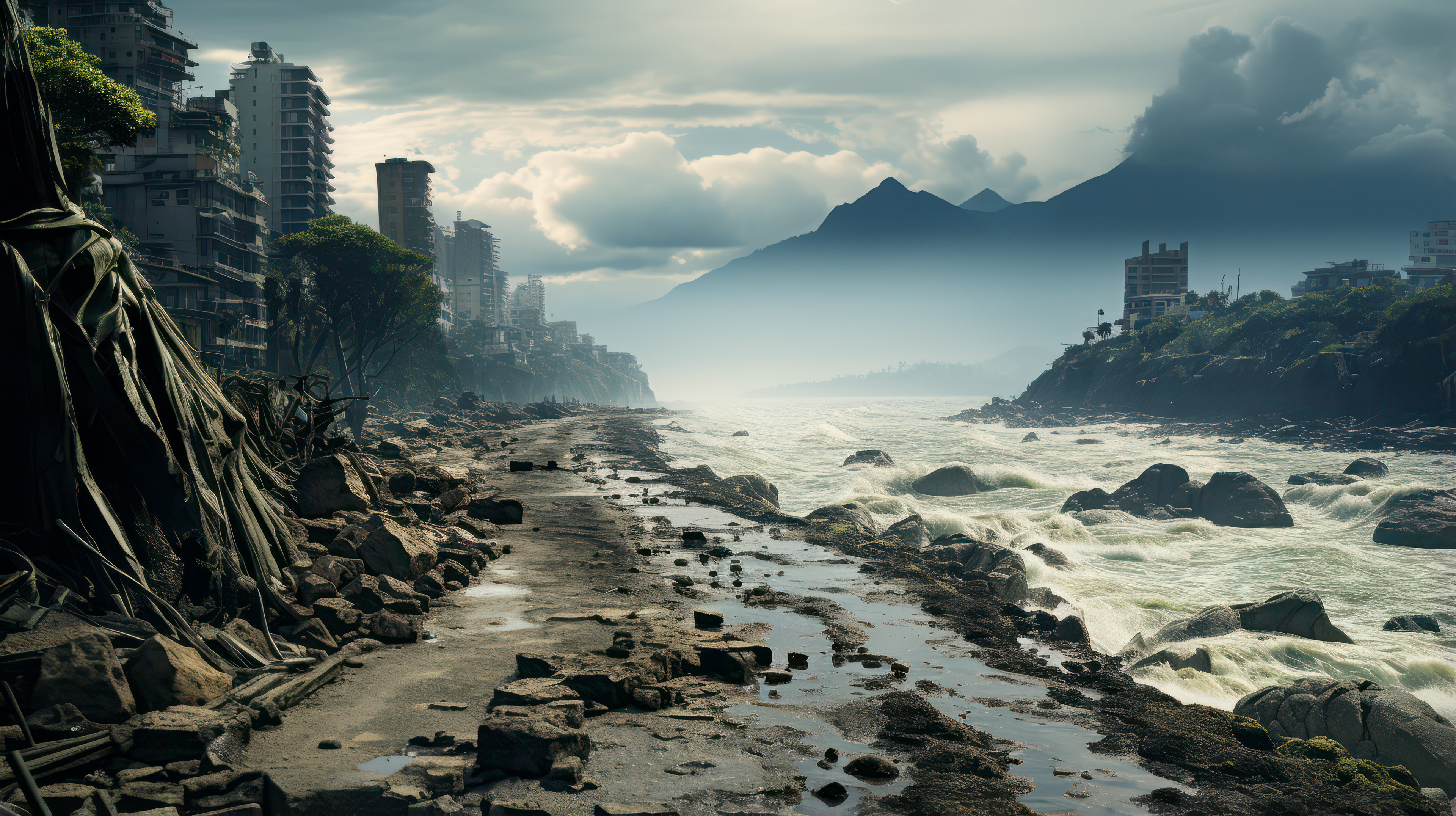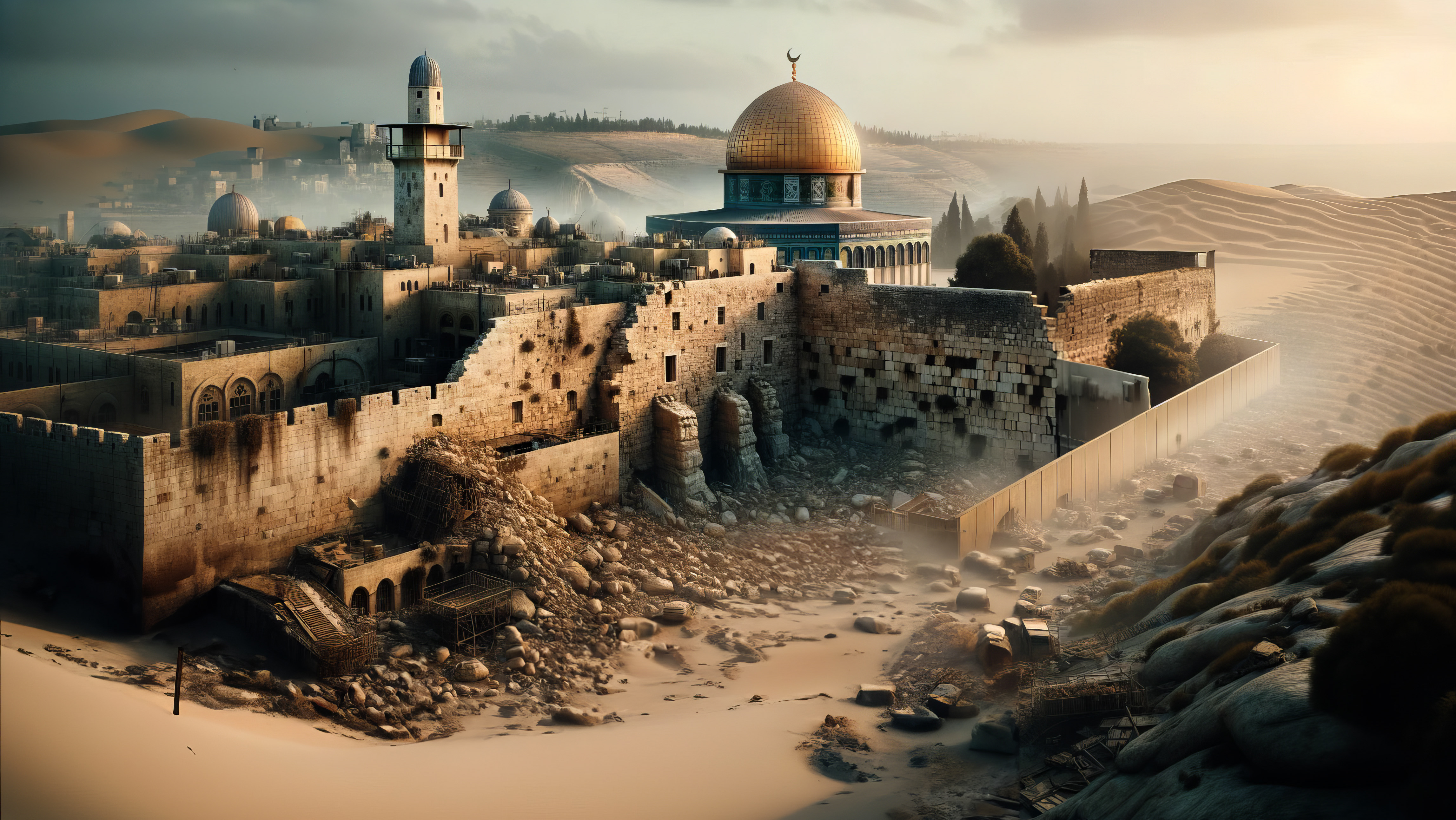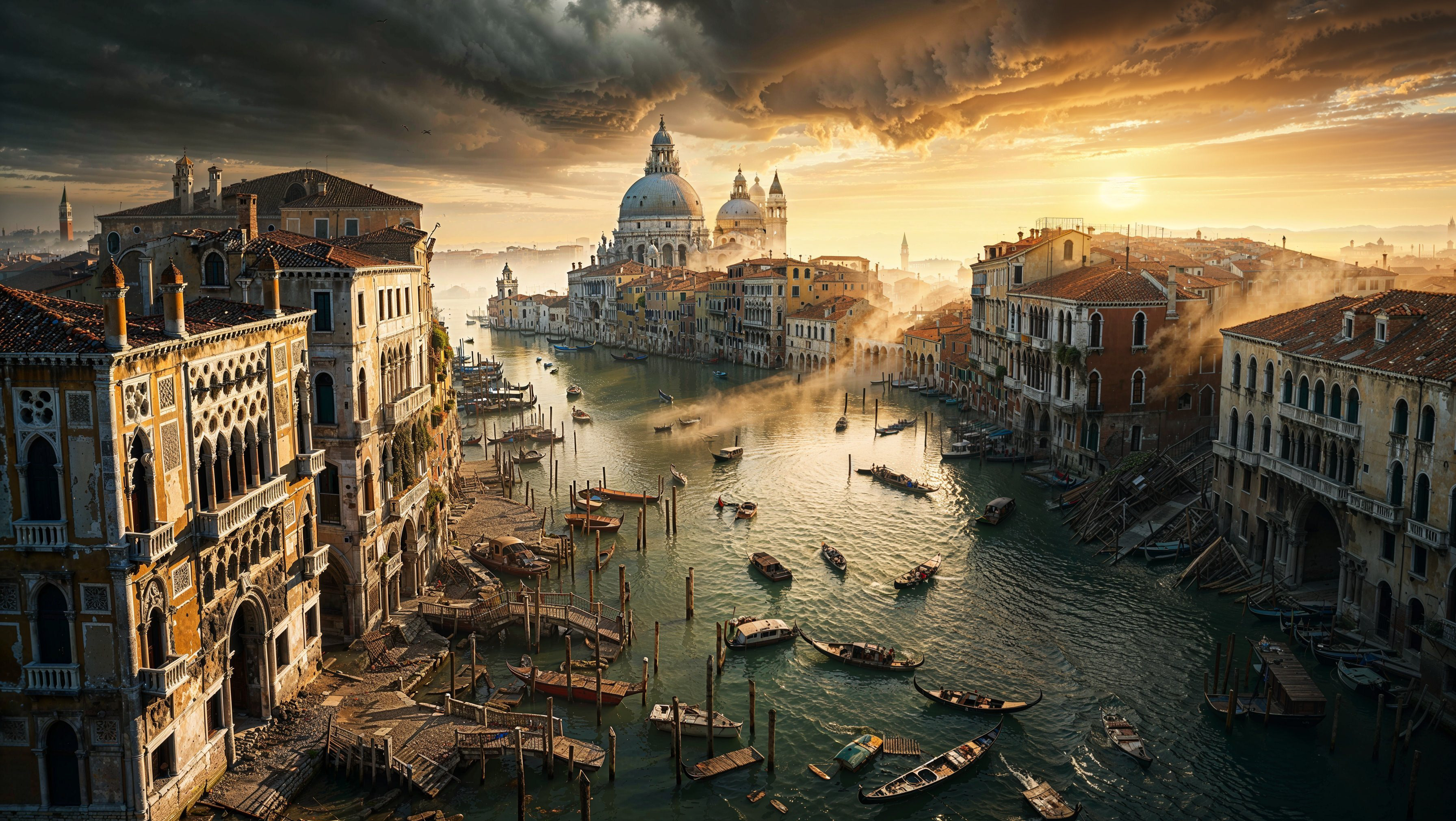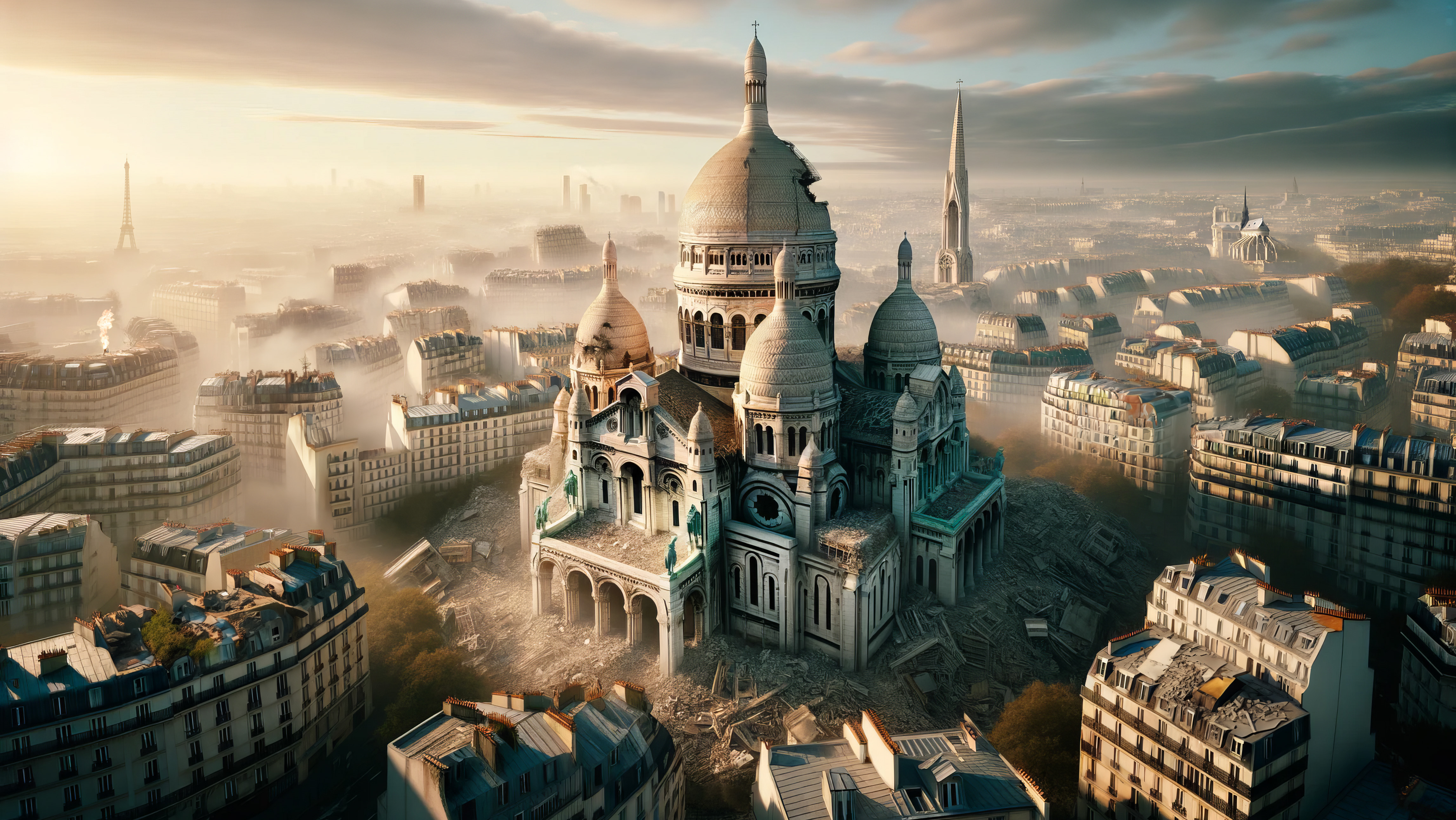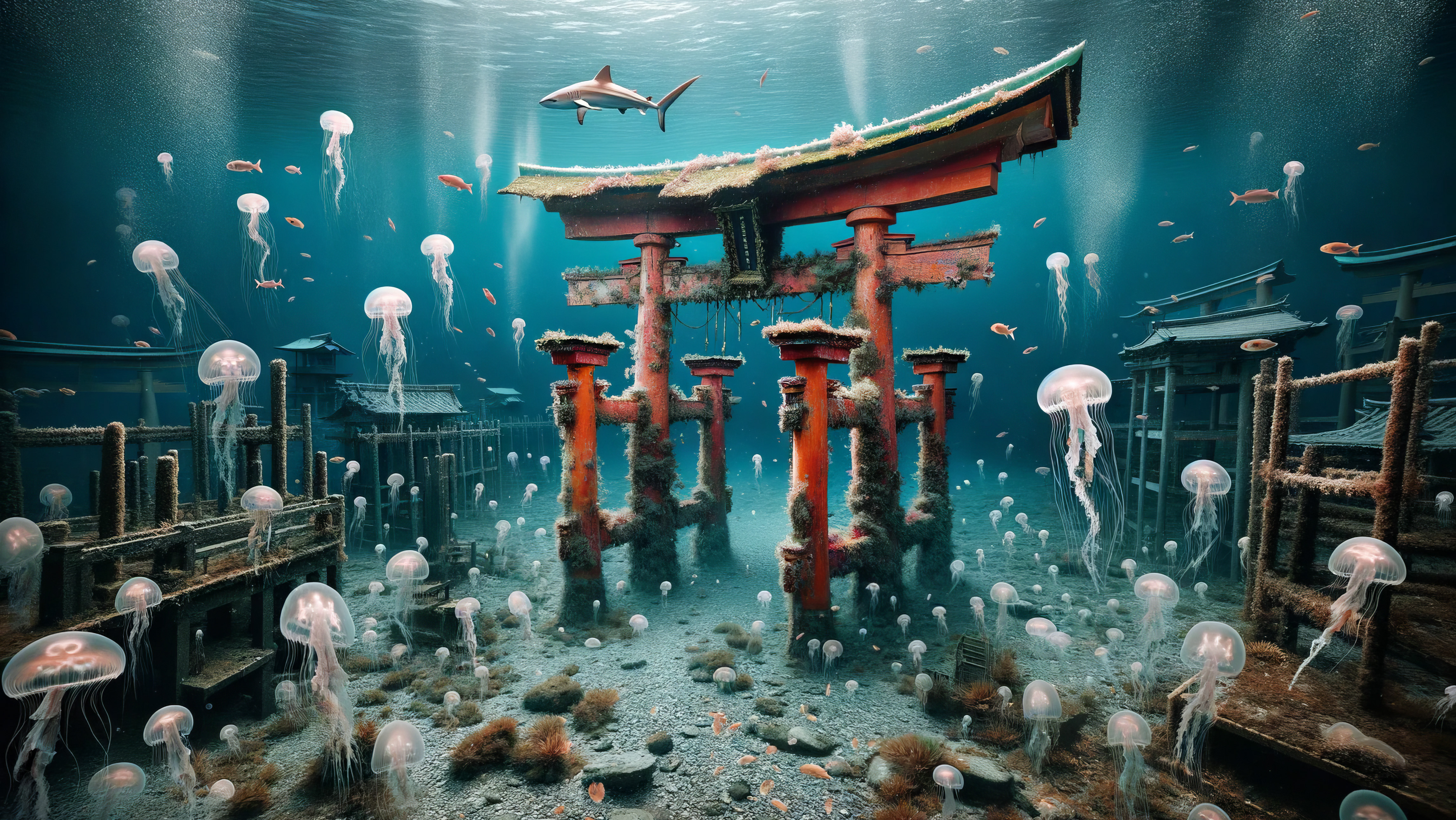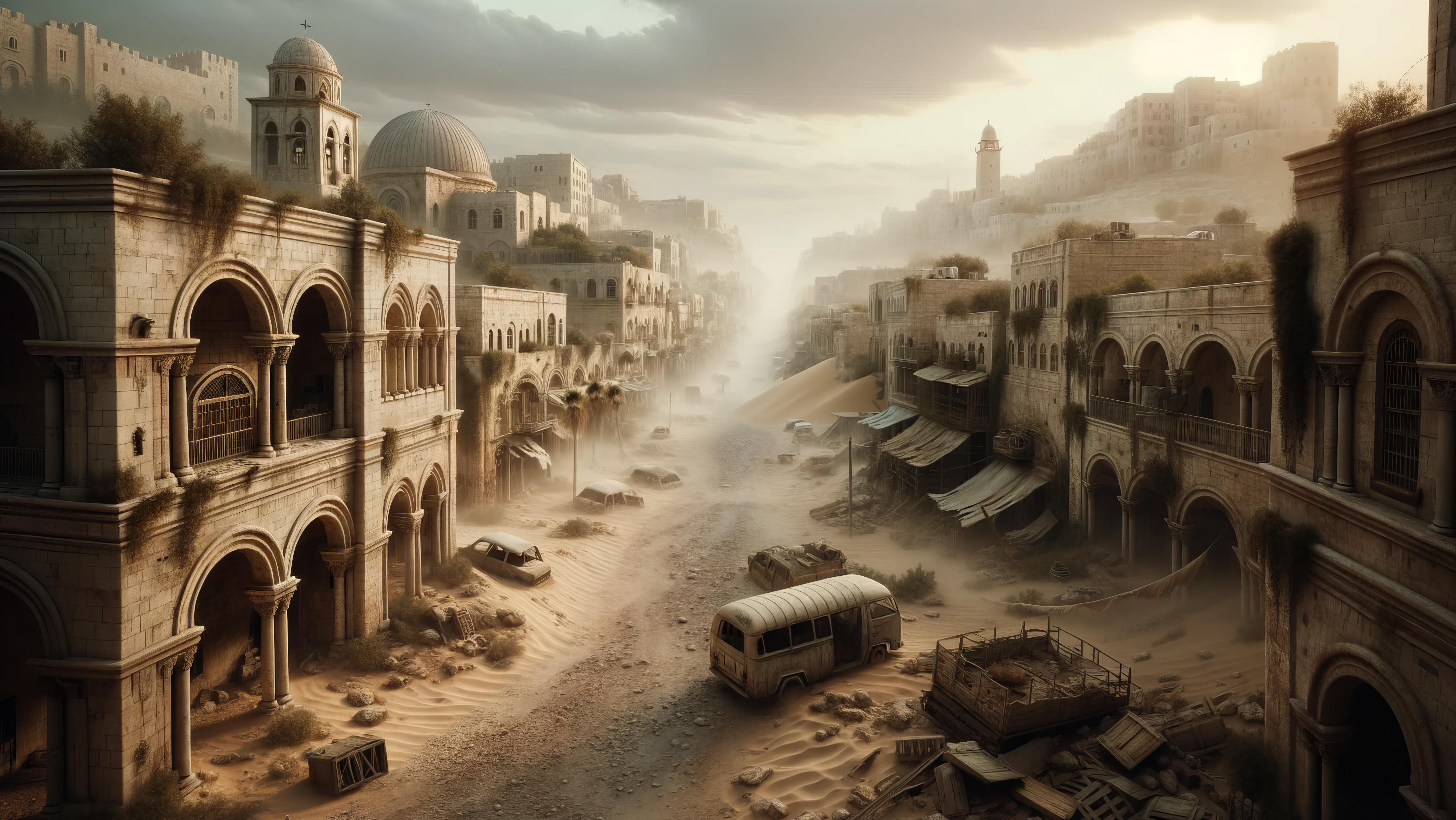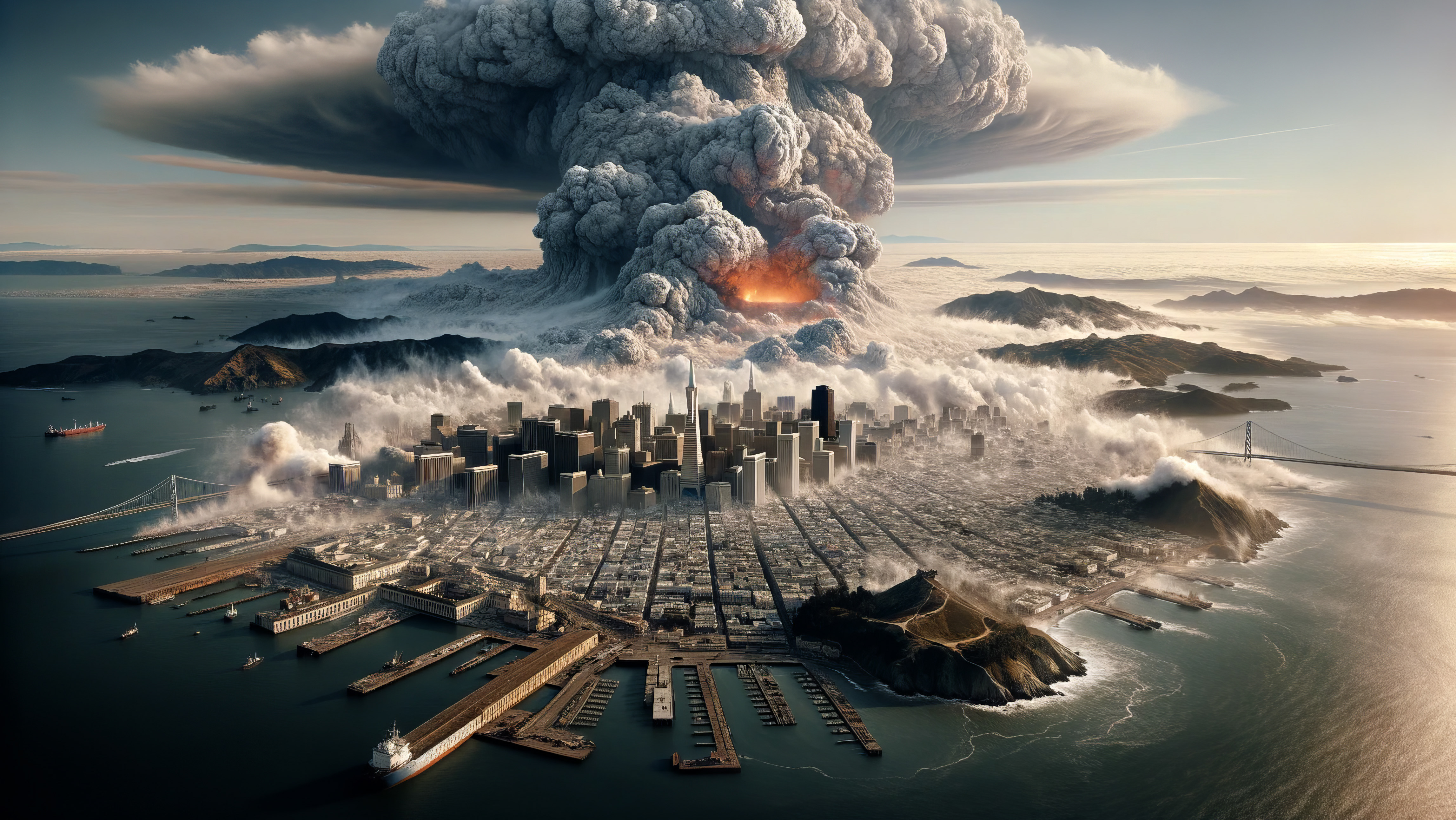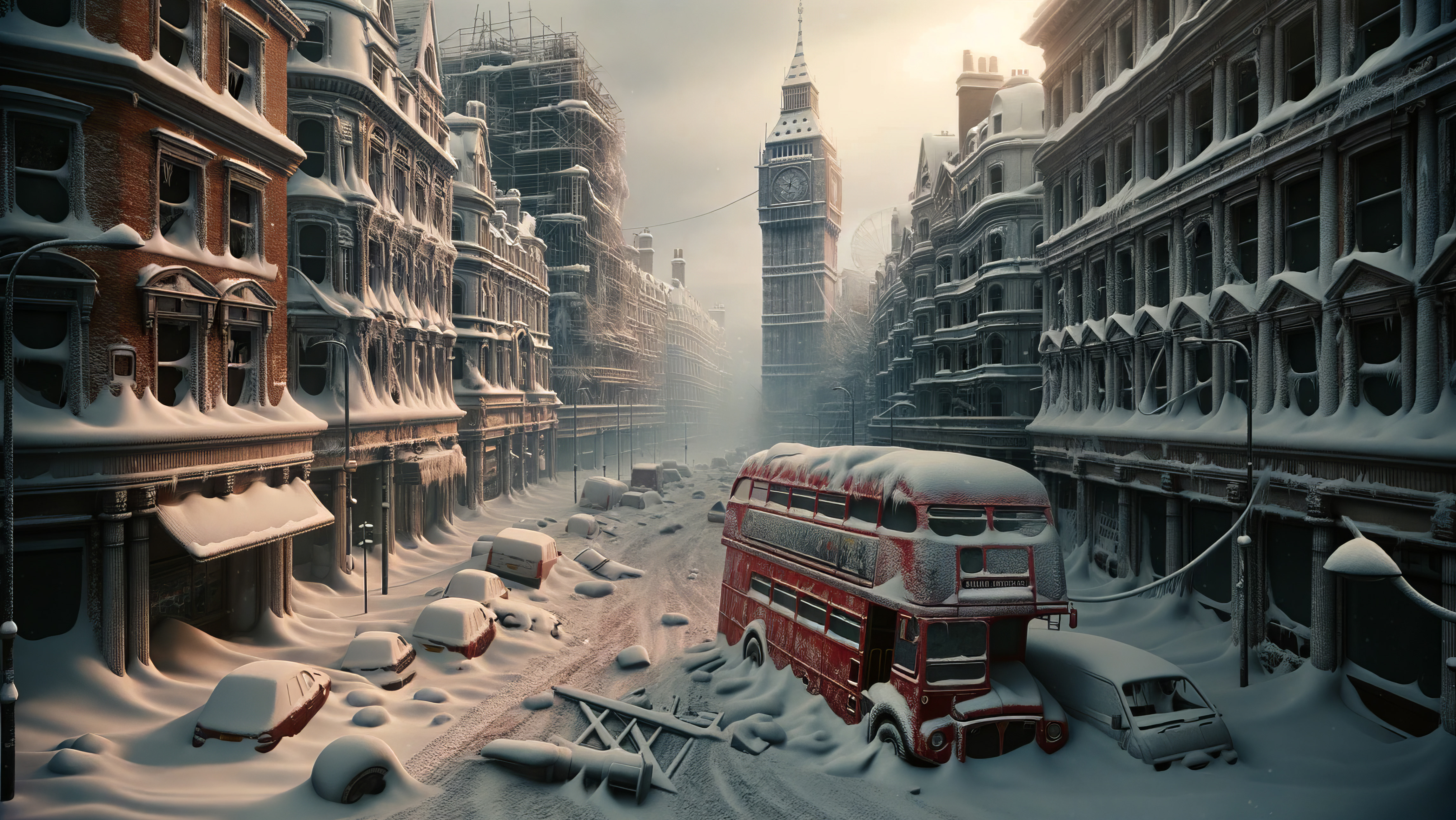The Allure of Rio's Past and Future
Hailing from a distant civilization, my journey as a time traveller brought me to Earth, specifically Rio de Janeiro, in January 2088. The purpose of my expedition was not mere curiosity but a profound research endeavour to understand post-apocalyptic Earth after humanity's mysterious disappearance.
Rio de Janeiro, the "Marvelous City," has been a radiant emblem of cultural vibrancy, natural splendour, and historical resonance. Cradled between the verdant embrace of the Tijuca Forest and the shimmering expanse of the Atlantic Ocean, Rio has been a confluence of indigenous legacies, colonial imprints, and contemporary dreams. But as I stood there, the city presented a tableau of stillness, a metropolis that yielded to nature's relentless march and the continuum of time.
The annals of Rio are as fluid and dynamic as its terrains. Established in 1565 by the Portuguese, it donned the mantle of Brazil's capital for over three centuries. This city has been a silent spectator to the ascent and decline of empires, the eradication of slavery, and the birth and evolution of samba rhythms that once resonated in its alleys. The Sugarloaf Mountain, or Pão de Açúcar, has been an age-old guardian of Rio's temporal shifts. Geological insights reveal that this granite monolith, soaring 396 meters above the harbour, is a staggering 600 million years old, a relic from the Precambrian epoch. Such intertwining of Rio's cultural mosaic with the primordial cadences of the planet is awe-inspiring.
Positioned atop Corcovado Mountain, I wasn't surrounded by the usual crowds eager to glimpse the iconic Christ the Redeemer statue. Instead, I was enveloped in a lonely world where the figure, one of the New Seven Wonders of the World, showcased the ravages of time. Its once immaculate white facade bore the marks of elemental wear and tear. The panorama below narrated a tale of nature's resurgence. Landslides marred the iconic golden sands of Copacabana and Ipanema, and the ethereal murmurs of the wind now supplanted the once rhythmic beats of the samba.
This odyssey is not merely a spatial exploration but a temporal one. It serves as a reflective mirror, reflecting the fleeting nature of human existence. Civilizations, irrespective of their grandeur, are temporary specks in the vast expanse of cosmic chronology. The legacies of the ancient Mayans, the residents of the Indus Valley, and the mighty Roman Empire are poignant reminders of the transitory nature of human triumphs.
Embarking on this temporal vacation to Rio, my quest is not solely driven by the exhilaration of exploration but a more profound search for understanding our cosmic insignificance. Through the remnants of a post-apocalyptic Rio, I seek to unearth lessons that transcend temporal confines—lessons of resilience, hope, and the perpetual cycle of creation and obliteration.
The Echoes of Christ the Redeemer
The base of the Corcovado Mountain greeted me with an overwhelming stillness. The once bustling pathway, frequented by eager tourists and devout pilgrims, was now veiled in an uncanny calm. The Tijuca Forest, with its dense canopy, seemed to murmur tales from epochs gone by, its whispers carrying the weight of millennia.
The climb was a juxtaposition of emotions. Every step was a dance between the vibrant echoes of Rio's illustrious past and the haunting reality of its post-apocalyptic present. In the wind, I could discern Carnaval's fleeting cadences, the samba drums' pulsating rhythms, and the joyous laughter of Cariocas basking in sunnier days. But these auditory mirages were transient, soon replaced by the symphony of rustling leaves and the poignant song of a lone bird.
Emerging from the enveloping mist as I neared the pinnacle was the iconic silhouette of the Christ the Redeemer statue. However, the visage that greeted me was not the immaculate white emblem celebrated in countless chronicles. With its relentless march, time had sculpted its narrative on the Savior. Once a beacon of hope and redemption, the statue now bore the indelible marks of landslides and the inevitable passage of time. Its arms, which once seemed to embrace humanity warmly, now appeared to lament the solitude of a city devoid of its inhabitants.
Drawing closer, the magnitude of its historical and cultural legacy was palpable. Crafted by the artistic genius of French sculptor Paul Landowski and unveiled in 1931, this Art Deco wonder stood as a tribute to Brazil's profound Christian faith. But the ravages of time had not spared even this divine sentinel. Its once polished soapstone facade now showcased a tapestry of cracks and crevices as nature endeavoured to assimilate this architectural marvel into its fold.
The summit offered a panoramic vista of Rio that was both awe-inspiring and melancholic. The vast urban expanse, with its renowned beaches and districts, presented a tableau of ruins. The Guanabara Bay, which once gleamed under the radiant tropical sun, now mirrored the sombre heavens. It was a poignant testament to the transitory nature of human achievements and aspirations.
Yet, even in its state of decay, the statue emanated an aura of tranquillity. It stood resilient, a symbol of enduring hope amidst adversity. As my fingers traced its eroded contours, I felt an ethereal bond with the myriad souls of Cariocas, who had once sought refuge and solace in its embrace.
In the shadow of the Redeemer, I reflected upon the inevitable cycles of time. The ascension and decline of civilizations, the fleeting glory of empires, and the indomitable essence of humanity. In its altered state, the Christ the Redeemer statue served not just as a monument to bygone days but also as a prophetic vision of a future. In this future, nature thrives in its majestic splendour, echoing the tales of a once flourishing human civilization, now lost to the annals of time.

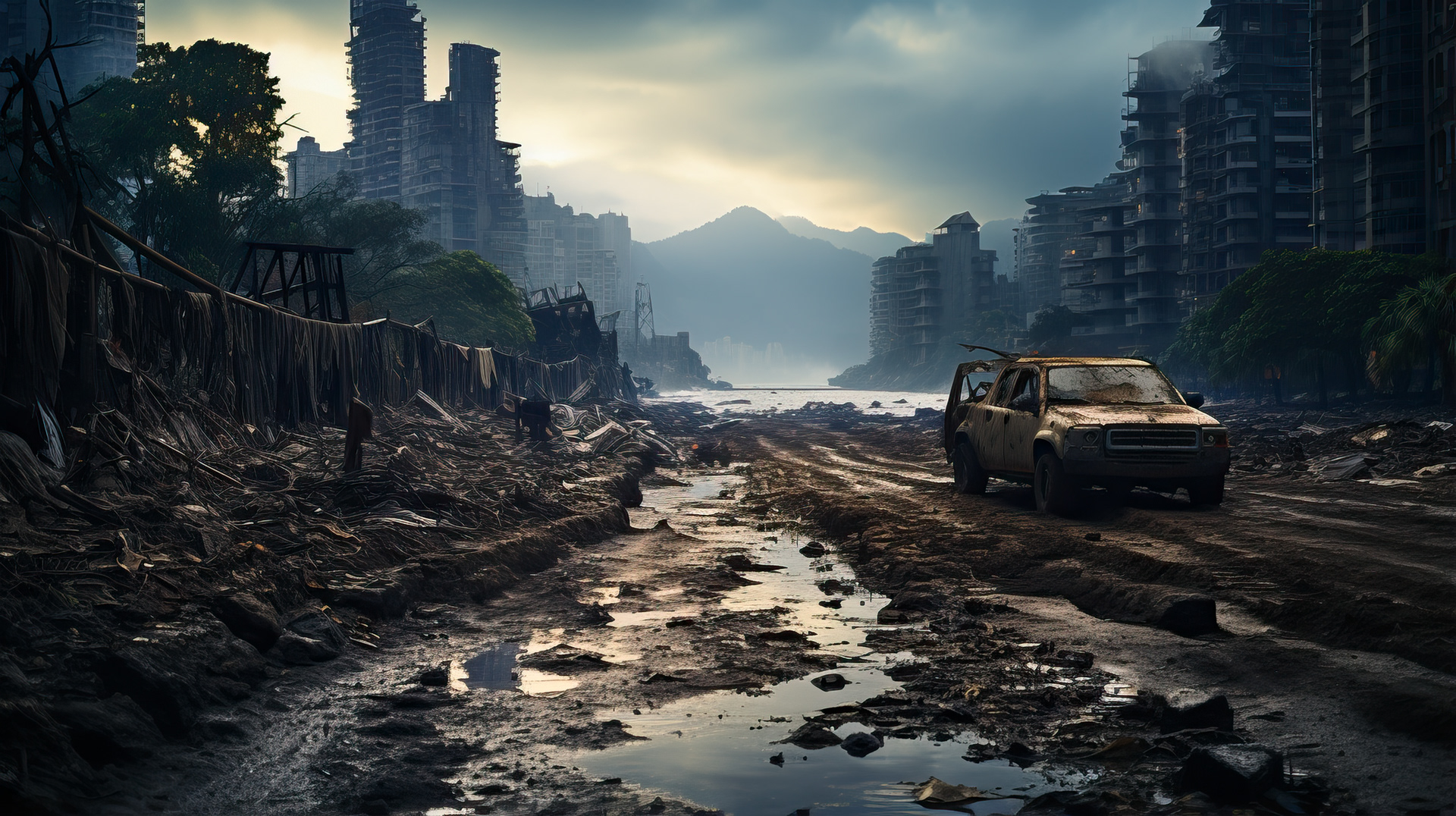
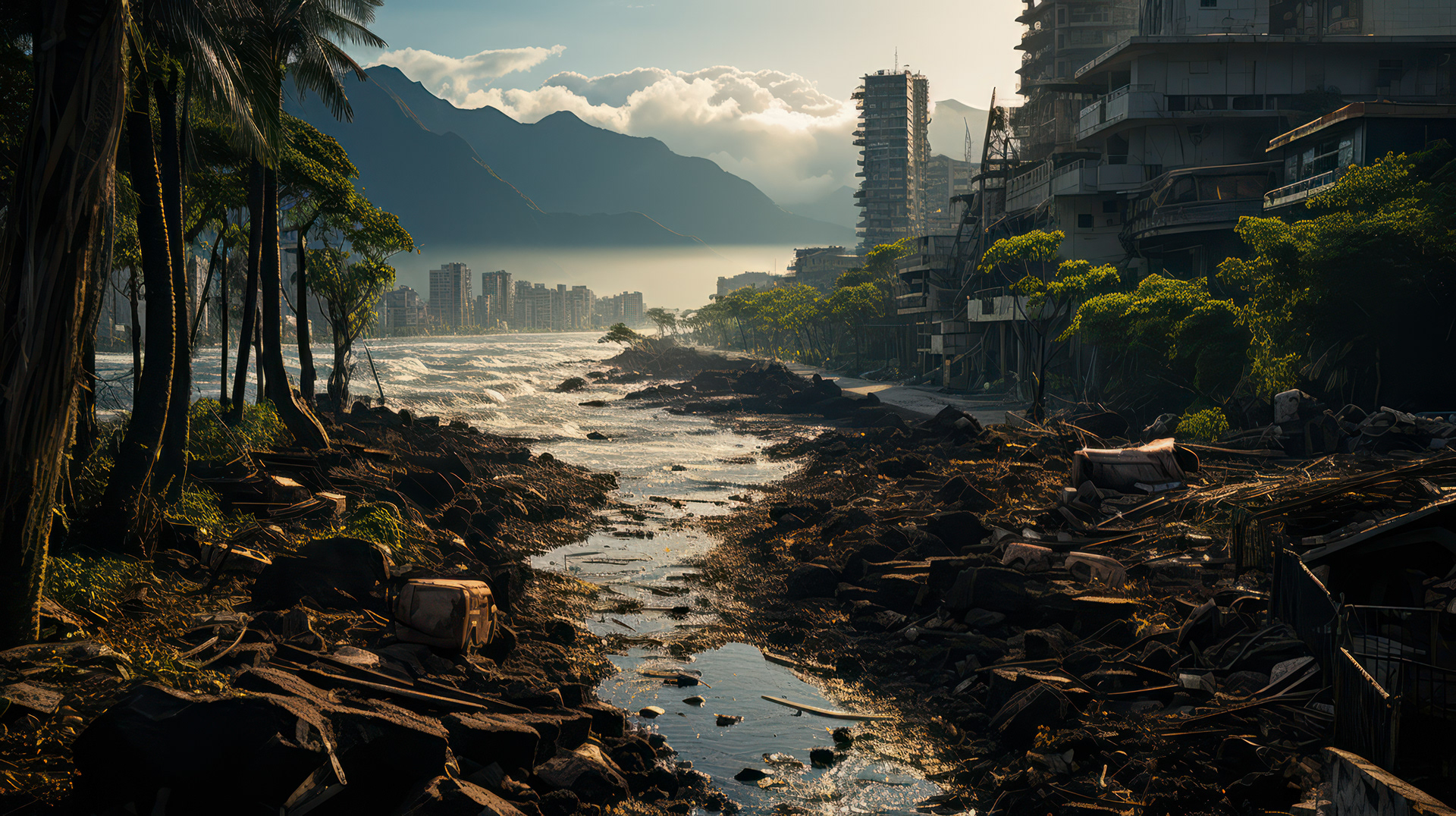


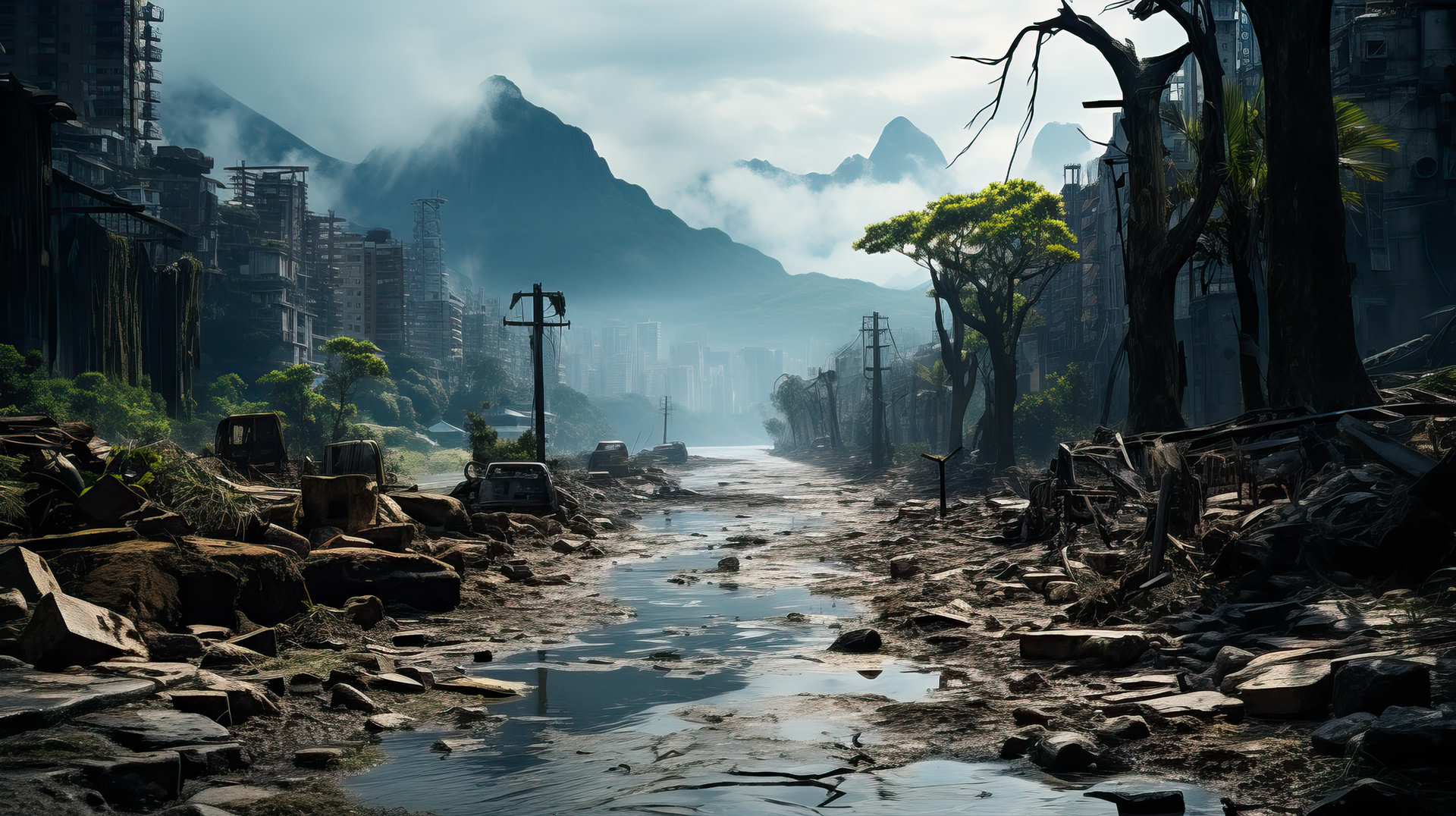
Lapa Arches and the Melodies of Time
Leaving the serene beaches behind, I ventured into the heart of Rio's bohemian district, Lapa. The city's rhythm changed here, from the gentle lull of the waves to the echoes of its vibrant nightlife and cultural heritage. The Lapa Arches, or Arcos da Lapa, loomed ahead, a historic aqueduct turned bridge, a testament to Rio's architectural prowess and rich history.
The arches, once bustling with trams, pedestrians, and the melodies of street musicians, now stood silent, their grandeur juxtaposed against the backdrop of a city that had come to a standstill. The intricate stonework, which had witnessed centuries of change, bore the marks of time, with moss and vines creeping over the once-pristine stones.
As I walked beneath the arches, the echoes of the past enveloped me. I could almost hear the harmonious blend of bossa nova, samba, and choro, the soulful melodies that had once resonated through the streets of Lapa. The vibrant murals and graffiti that adorned the nearby walls seemed to come alive, narrating tales of passion, rebellion, and the indomitable spirit of the Cariocas.
Nearby, the Selarón Steps, or Escadaria Selarón, beckoned. This mosaic masterpiece, the brainchild of artist Jorge Selarón, was a kaleidoscope of colours with tiles from over 60 countries. Each step told a unique story, reflecting the global connections that bind humanity. But now, many tiles were missing or faded, and the once vibrant staircase lay in partial ruin, a poignant reminder of the impermanence of art and life.
Yet, even in its state of decay, Lapa exuded a sense of timeless beauty. With its winding streets and colonial-style houses, the district seemed to be caught in a temporal paradox, oscillating between its glorious past and the haunting present. The bars and clubs, which had once pulsated with energy and music, now stood silent, their doors closed but their memories intact.
Sitting on the Selarón Steps, I felt a deep sense of nostalgia. With its rich cultural tapestry and bohemian spirit, Lapa was a microcosm of Rio's soul. The melodies of time, both joyous and melancholy, played on, reminding me of the cyclical nature of existence and the enduring power of art, music, and human connection.


Maracanã's Silent Echoes
The journey through Rio's post-apocalyptic landscape led me next to the Maracanã Stadium, a symbol of Brazil's unparalleled passion for football. As I approached this iconic arena, the vastness of its structure loomed ahead, casting a shadow that seemed to encapsulate the city's collective memories of joy, triumph, and heartbreak.
Built for the 1950 FIFA World Cup, the Maracanã was more than just a stadium; it was a temple of football. It had witnessed some of the most iconic moments in sports history, from Pelé's 1,000th goal to Brazil's historic World Cup victories. The roar of the crowd, the exhilarating destinations, and the rhythmic beats of the drums were all integral parts of the Maracanã experience.
But as I entered the stadium, an overwhelming silence greeted me. The once lush green pitch was overrun with wild grass and shrubs, nature's way of reclaiming its territory. The stands, which had once held over 200,000 screaming fans, were now deserted, with only the occasional bird or stray animal to break the stillness.
The effects of the landslides were evident here, too. Parts of the stadium's structure had collapsed, and the once pristine corridors and locker rooms bore the marks of decay and neglect. Yet, amidst the ruins, the essence of the Maracanã remained intact. The goalposts, though rusted, stood tall as if waiting for the next game to begin.
As I walked through the empty corridors, the echoes of the past were palpable. I could almost hear the commentator's voice, the crowd cheers, and the ball hitting the back of the net. The memories of legendary players like Pelé, Romário, and Zico seemed to permeate the very walls of the stadium.
Sitting in the stands, I reflected on the cyclical nature of life. The Maracanã, with its glorious past and desolate present, was a testament to the fleeting nature of human achievements. Yet, it also symbolized the enduring power of passion, dreams, and collective memories. Even in silence, the stadium whispered tales of hope, resilience, and the undying love for the beautiful game.
As the sun set, casting a golden hue over the Maracanã, I felt deeply grateful. Even in a post-apocalyptic world, the spirit of football, the memories of legendary matches, and the dreams of countless fans lived on, waiting for the day when the Maracanã's echoes would once again resonate with the sounds of celebration and jubilation.
Muted Roars
The journey to the Maracanã Stadium was a poignant reminder of the delicate dance between human ambition and nature's whims. As I approached this iconic structure, the vastness of its architecture was overshadowed by the evident marks of landslides and decay. The stadium, which had once reverberated with the cheers of passionate fans, now stood silent, its grandeur echoing a bygone era.
From my understanding, humans had a very peculiar game called football. They would chase a spherical object, attempting to propel it into a netted structure using only their feet. The objective seemed simple, yet the emotions and enthusiasm it evoked were unparalleled. Thinking of thousands gathering to watch 22 individuals chase a ball was amusing and fascinating. Yet, this seemingly simple game was a microcosm of human emotions, aspirations, and collective spirit.
The Maracanã's design, with its vast open spaces and proximity to the hilly terrain, made it vulnerable to the geological shifts of the region. The soil composition around Maracanã, rich in clayey silt and sandy clay, and the city's intense rainfall patterns, created a perfect storm for landslides. The cascading debris from the nearby hills had left parts of the stadium buried, with only the upper tiers visible above the mud.
Yet, amidst the ruins, memories of Maracanã's glorious past were palpable. I could almost hear the roars of the crowds. The stadium had also witnessed legendary performances by football greats like Pelé, Zico, and Romário. Moreover, Maracanã was not just a football arena; it hosted concerts, cultural events, and even religious gatherings, making it a melting pot of Brazilian culture.
Walking through the abandoned corridors, I stumbled upon an old plaque commemorating Pelé's 1,000th career goal, scored in 1969. The faded inscription spoke of a moment when time stood still, and an entire nation celebrated the prowess of its footballing hero. Could he have known that all this would be gone? That the very grounds where he showcased his talent would one day lie in ruins? That the cheers, the applause, the very essence of the game would be silenced forever? It was a sobering thought, reflecting on the transient nature of fame, glory, and human achievements.
As I sat on the stadium's steps, overlooking the pitch now overrun with wild grass and flora, I reflected on the cyclical nature of life. Maracanã, in its heyday, was a symbol of collective joy, unity, and national pride. Now, it served as a stark reminder of nature's reclaiming power. The muted roars of the past were a testament to the fleeting nature of human endeavours, yet they also spoke of the indomitable spirit of a civilization that once was.
Selarón's Steps: A Mosaic of Memories
Descending from the heights of Santa Teresa, I was drawn to the vibrant colours of the Escadaria Selarón, commonly known as the Selarón Steps. This world-famous staircase, a labour of love by Chilean-born artist Jorge Selarón, was a testament to the power of passion and dedication. Comprising over 2,000 tiles collected from more than 60 countries, the steps were a mosaic of global unity and artistic expression.
However, the once bustling steps, where tourists flocked to capture memories and locals paused to admire the ever-evolving artwork, now lay in a state of desolation. The landslides had not spared this iconic landmark, with many of its tiles dislodged or buried beneath layers of mud and debris. The vibrant reds, blues, and yellows were now interspersed with the earthy tones of nature's reclaiming force.
Yet, even in its altered state, the essence of Selarón's vision shone through. Each tile, whether intact or fragmented, told a story. From hand-painted depictions of Rio's landmarks to tiles donated by travellers, the steps were a patchwork of memories, dreams, and shared human experiences.
As I carefully treaded on the mosaic, I could almost hear the echoes of Selarón's voice, passionately narrating the journey of creating this masterpiece. The artist had started this project as a tribute to the Brazilian people, and over the years, it became an ever-evolving canvas, with Selarón constantly adding and modifying tiles until his last days.
Amidst the ruins, I stumbled upon a tile that bore the image of Selarón himself, a fitting tribute to the artist who had dedicated his life to this stairway. It was a poignant reminder of the impermanence of life and the enduring legacy of art.
The Selarón Steps, even in their post-apocalyptic state, were a beacon of hope and resilience. They symbolized the indomitable human spirit, the desire to create beauty in the face of adversity, and the power of art to unite and inspire.
I felt a profound gratitude as the sun cast its golden rays on the mosaic, illuminating the myriad of colours and stories. The Selarón Steps stood as a testament to the enduring power of love, passion, and creativity in a world marked by destruction and loss. They were a reminder that even in the darkest of times, the human spirit shines brightest, leaving behind a legacy that transcends time and space.

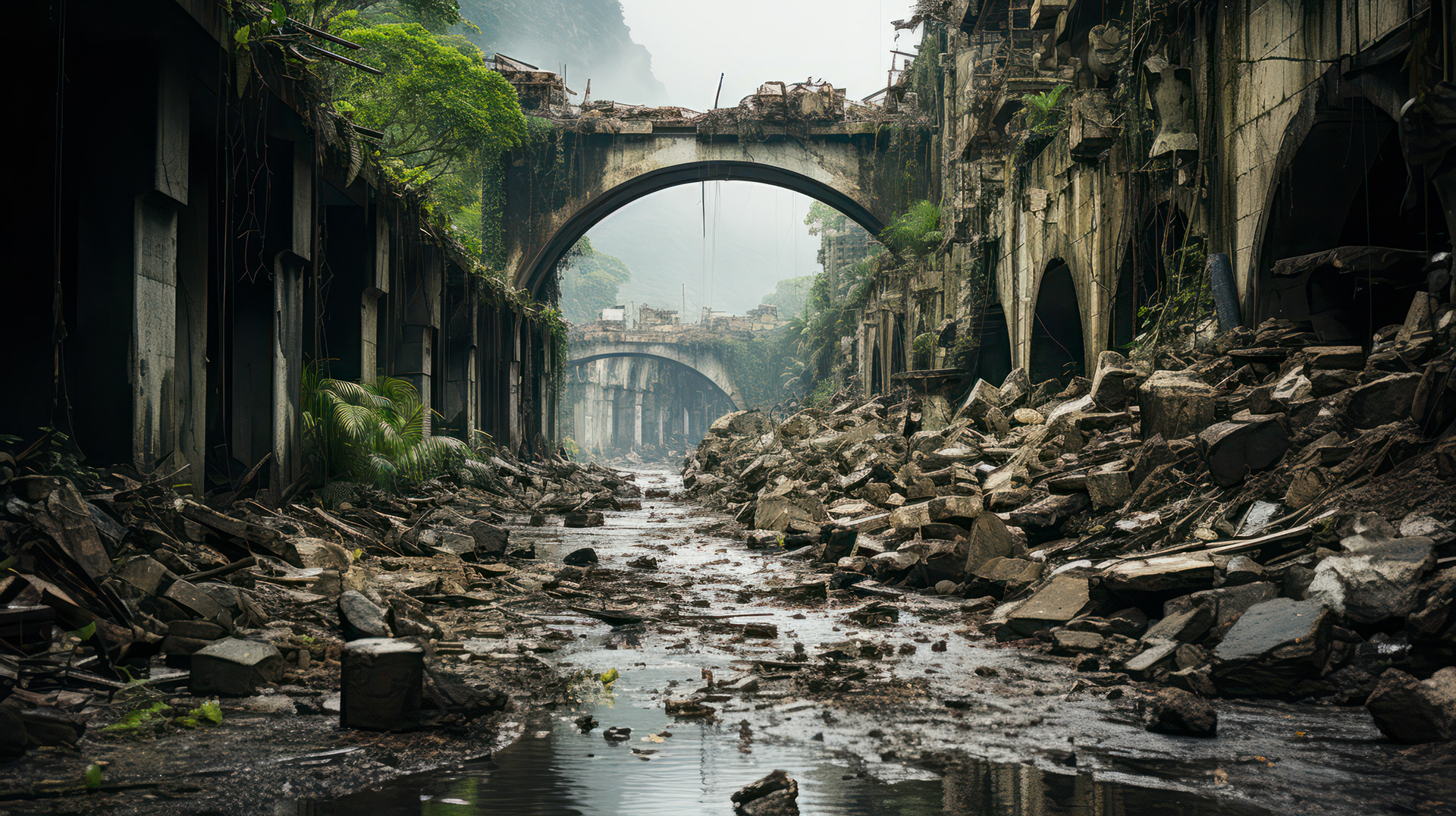

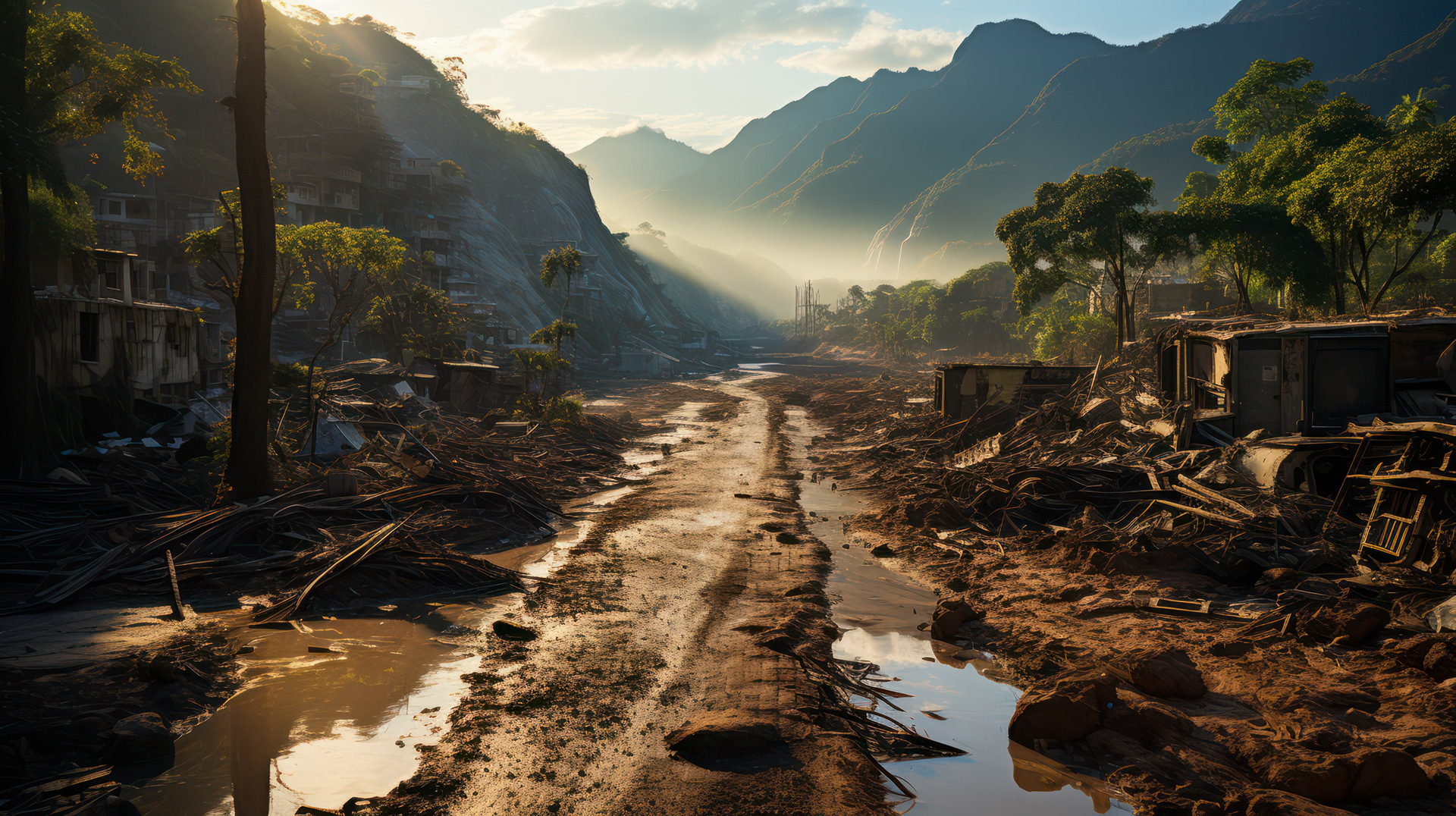
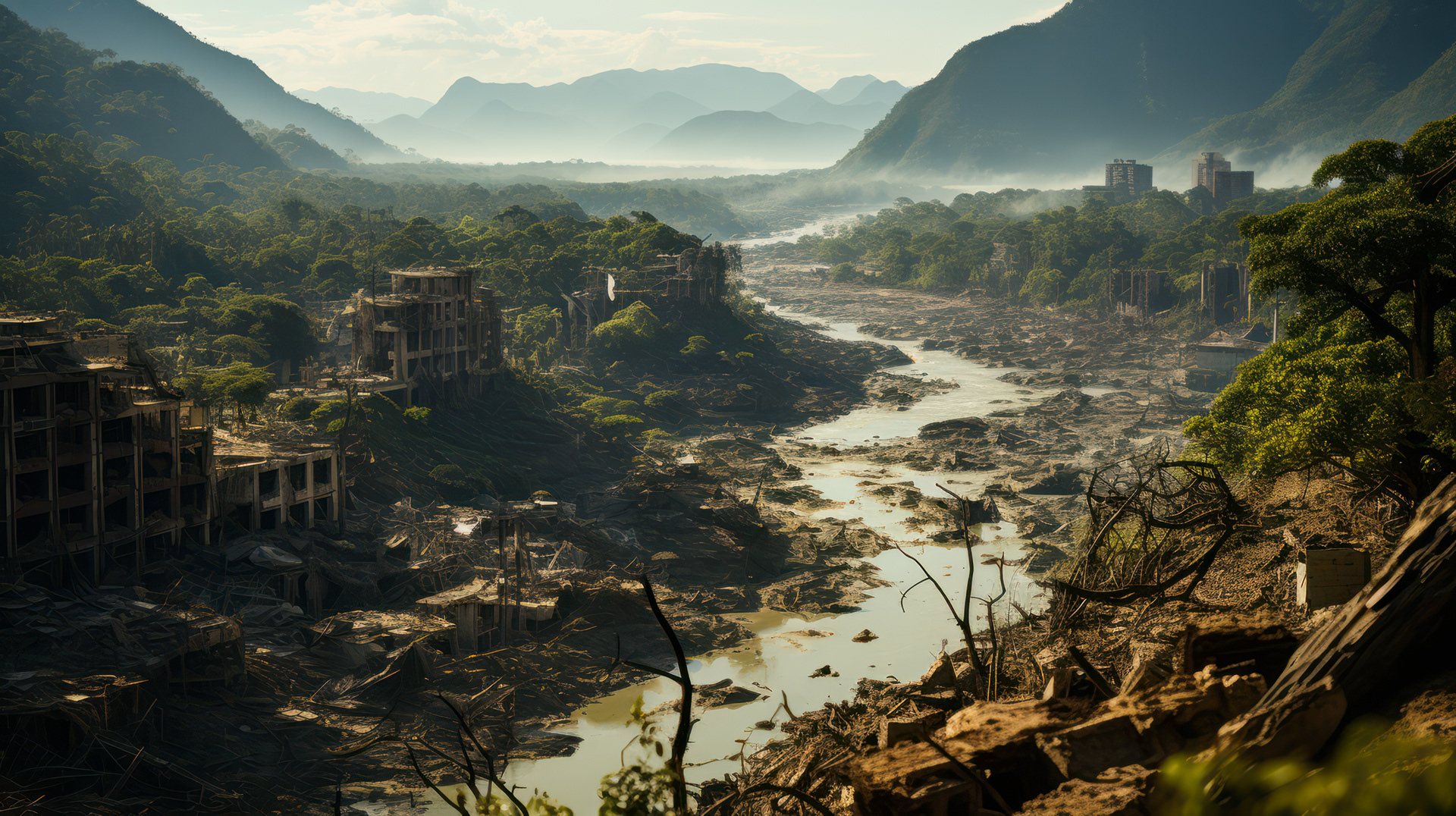
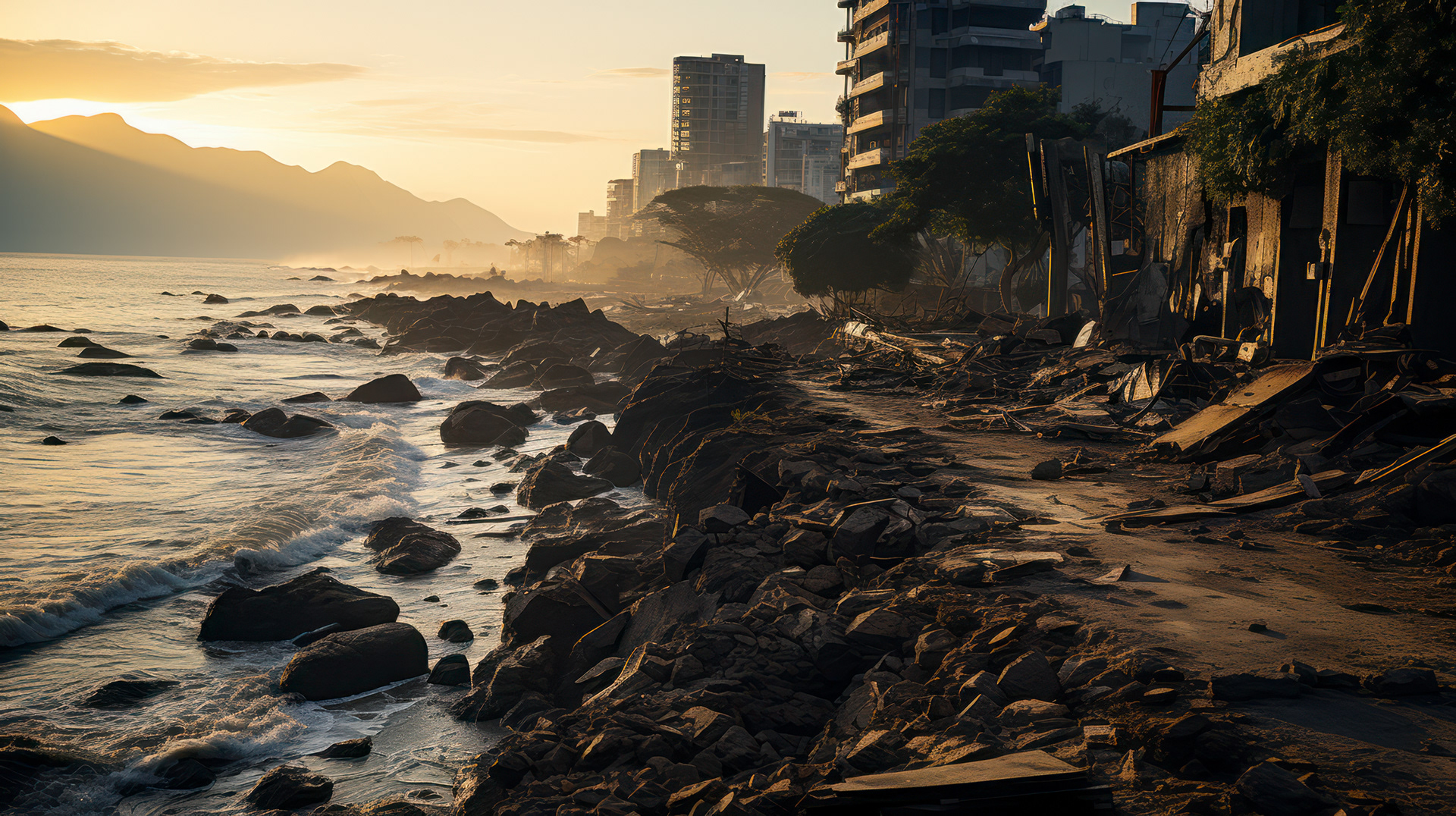
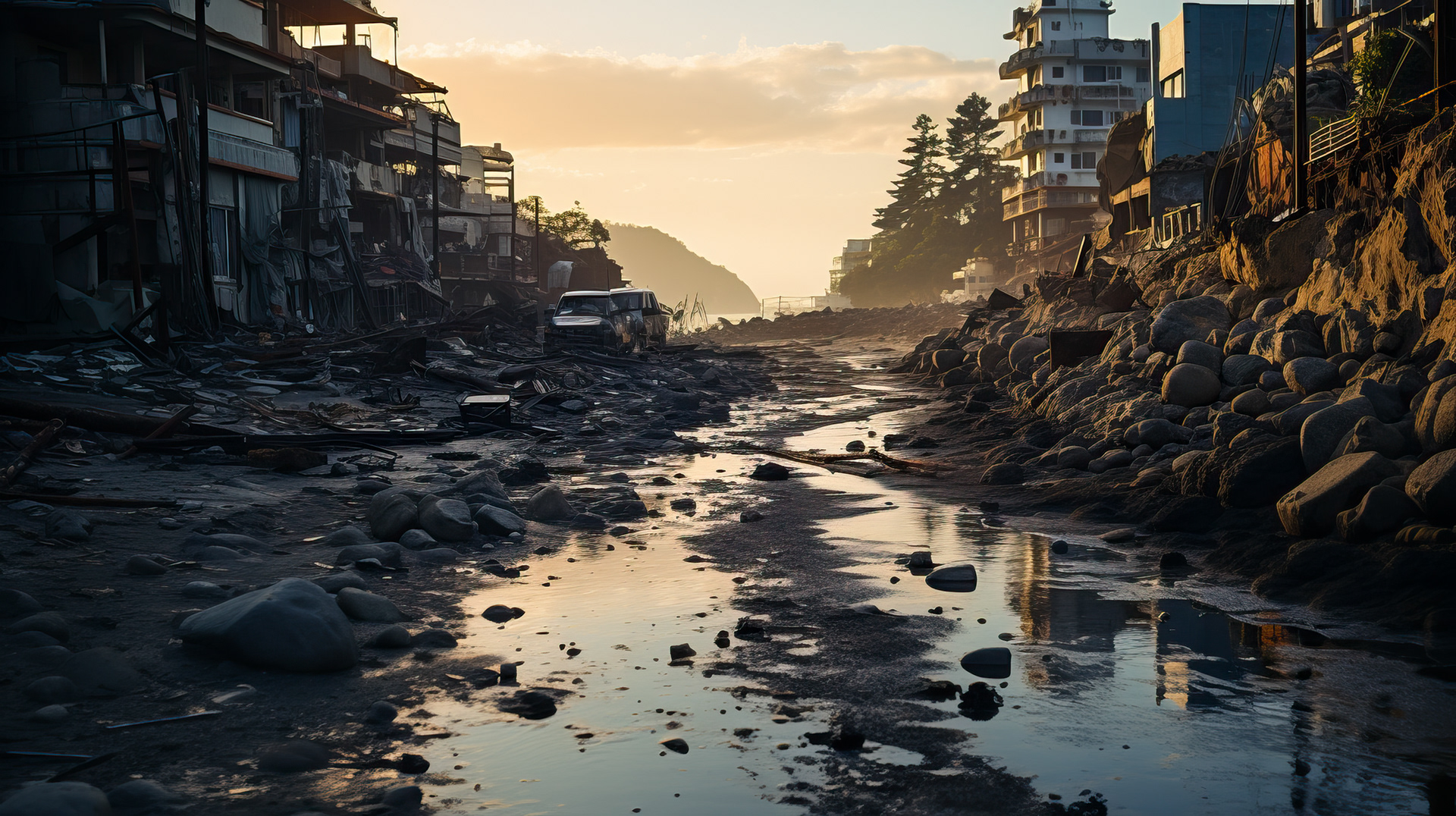
Quantum Mechanics and the Fragility of Time
As I continued my exploration of post-apocalyptic Rio, the intricate dance between the macroscopic world we perceive and the underlying quantum realm became increasingly evident. The catastrophic events that had befallen the city were not just the result of entropy imbalances but also the intricate interplay of quantum mechanics and the nature of time itself.
Time travel, as conceptualized by humans, was deeply rooted in the principles of quantum mechanics. The very act of moving backwards or forward in time required navigating the probabilistic waves of quantum states. According to the Schrödinger equation, which describes how the quantum state of a physical system changes over time, every possible state of a system at a given time evolves from its states at earlier times.
By its very nature, the act of time travel disrupted these quantum states, introducing anomalies that the macroscopic world was ill-equipped to handle. When viewed through the lens of quantum mechanics, the mass transfers from different time periods were akin to superimposing multiple wave functions, leading to unforeseen interference patterns.
Moreover, the Heisenberg Uncertainty Principle further complicated the matter. It states that certain pairs of physical properties (like position and momentum) cannot be precisely measured simultaneously. The very act of observing a system inherently changes its state.
In the context of time travel, transporting mass from one time period to another was akin to a quantum observation, introducing uncertainties that had cascading effects on the macroscopic scale.
The fragile nature of time, intertwined with the probabilistic nature of quantum mechanics, meant that even minor perturbations could lead to significant changes in the macroscopic world. Rio's altered landscape, with its landslides and climatic upheavals, was a manifestation of these quantum disruptions on a grand scale.
As I pondered these profound implications, the delicate balance between human curiosity, scientific exploration, and the fundamental laws of nature became apparent. The quest for understanding, while noble, came with responsibilities. The story of Rio served as a stark reminder of the need for caution, humility, and respect for the intricate tapestry of our universe.
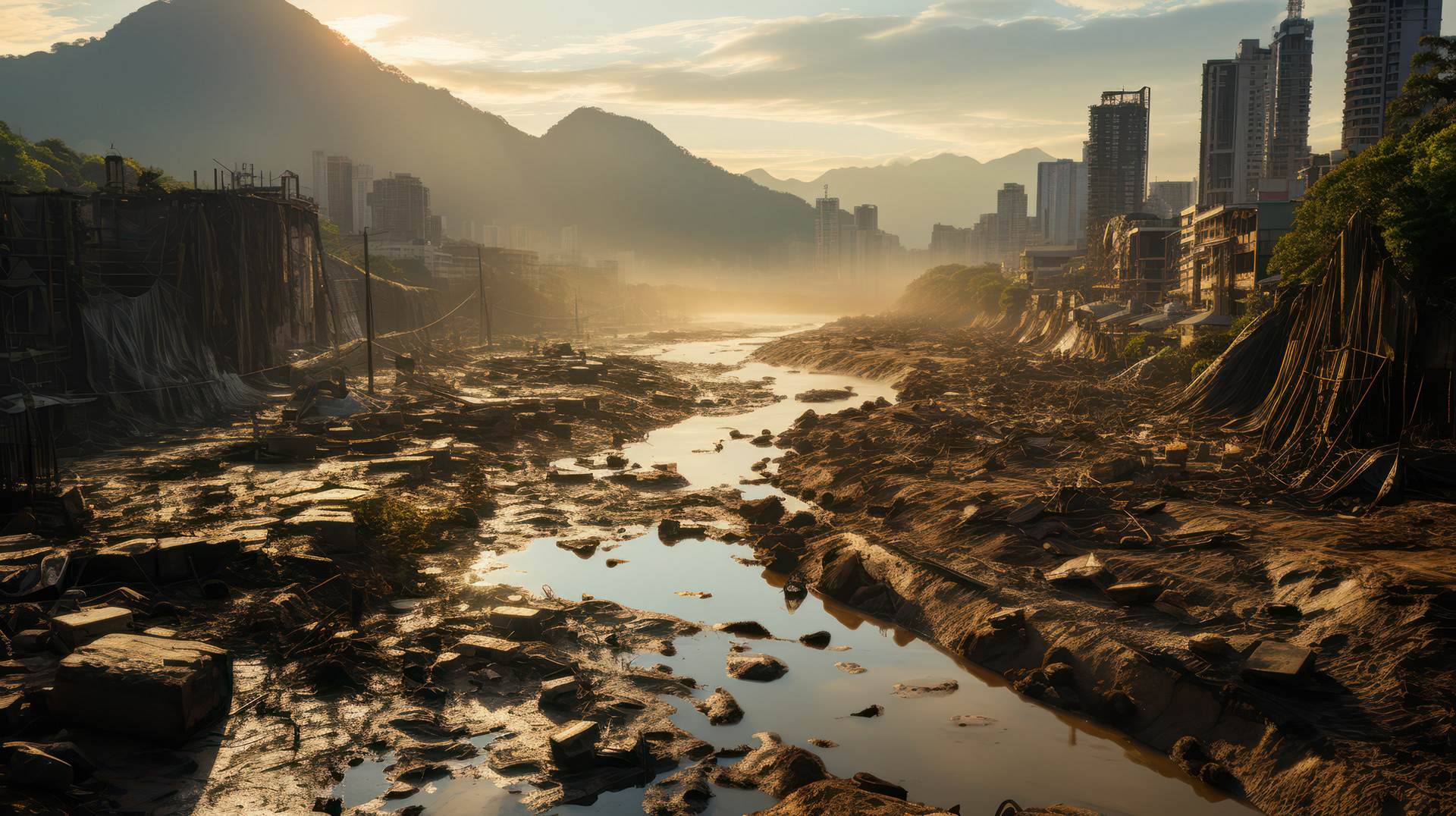

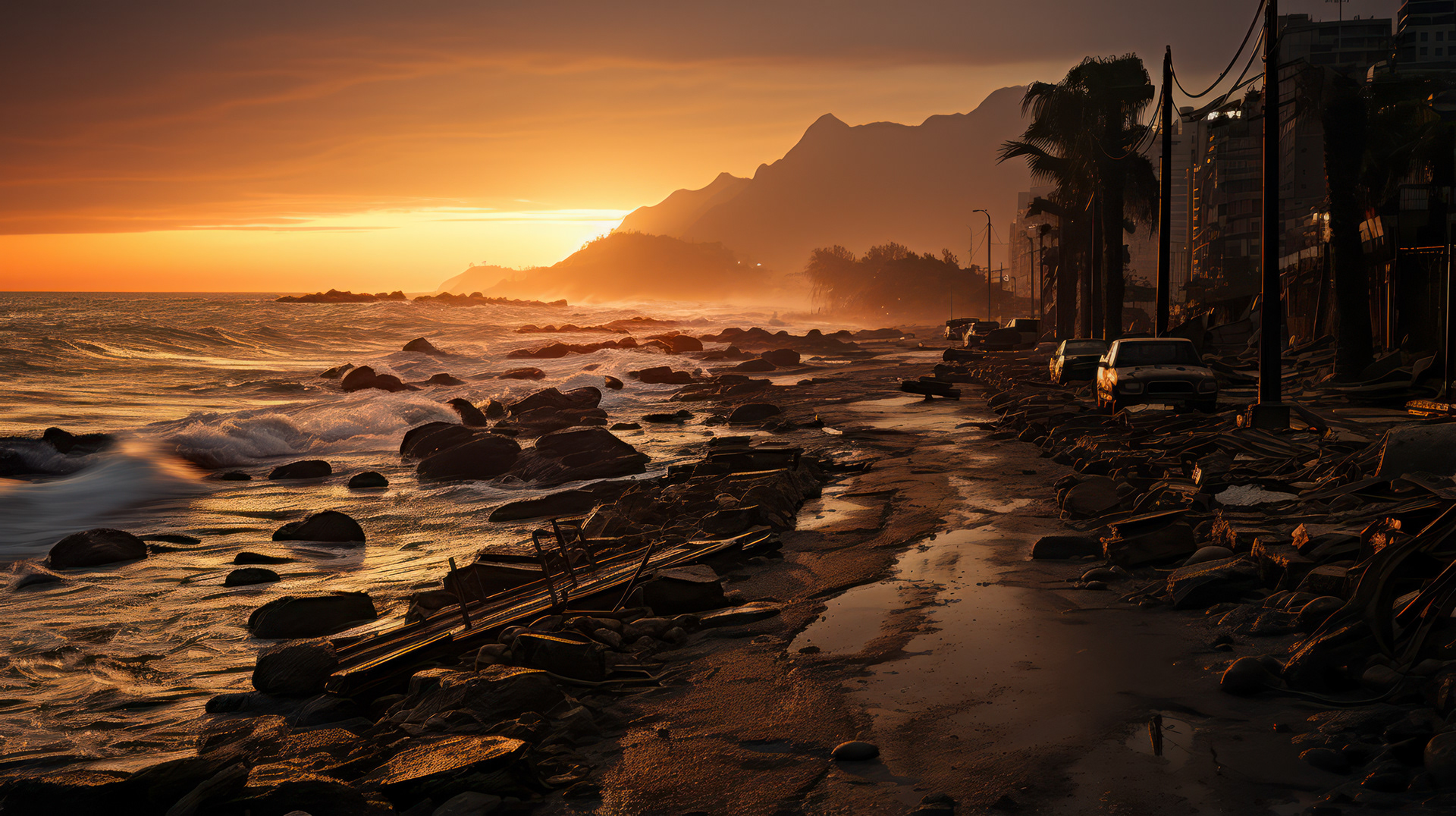

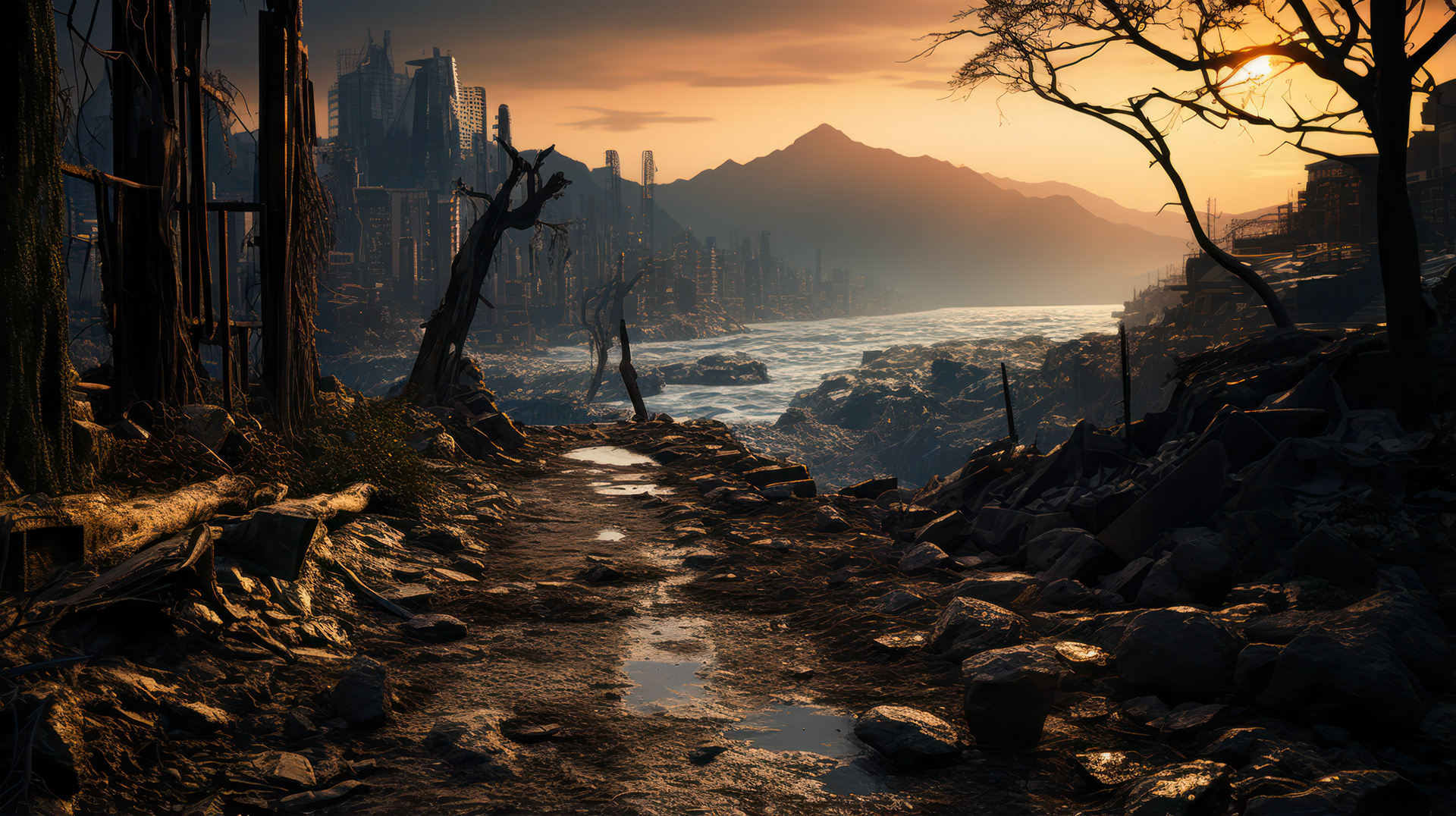

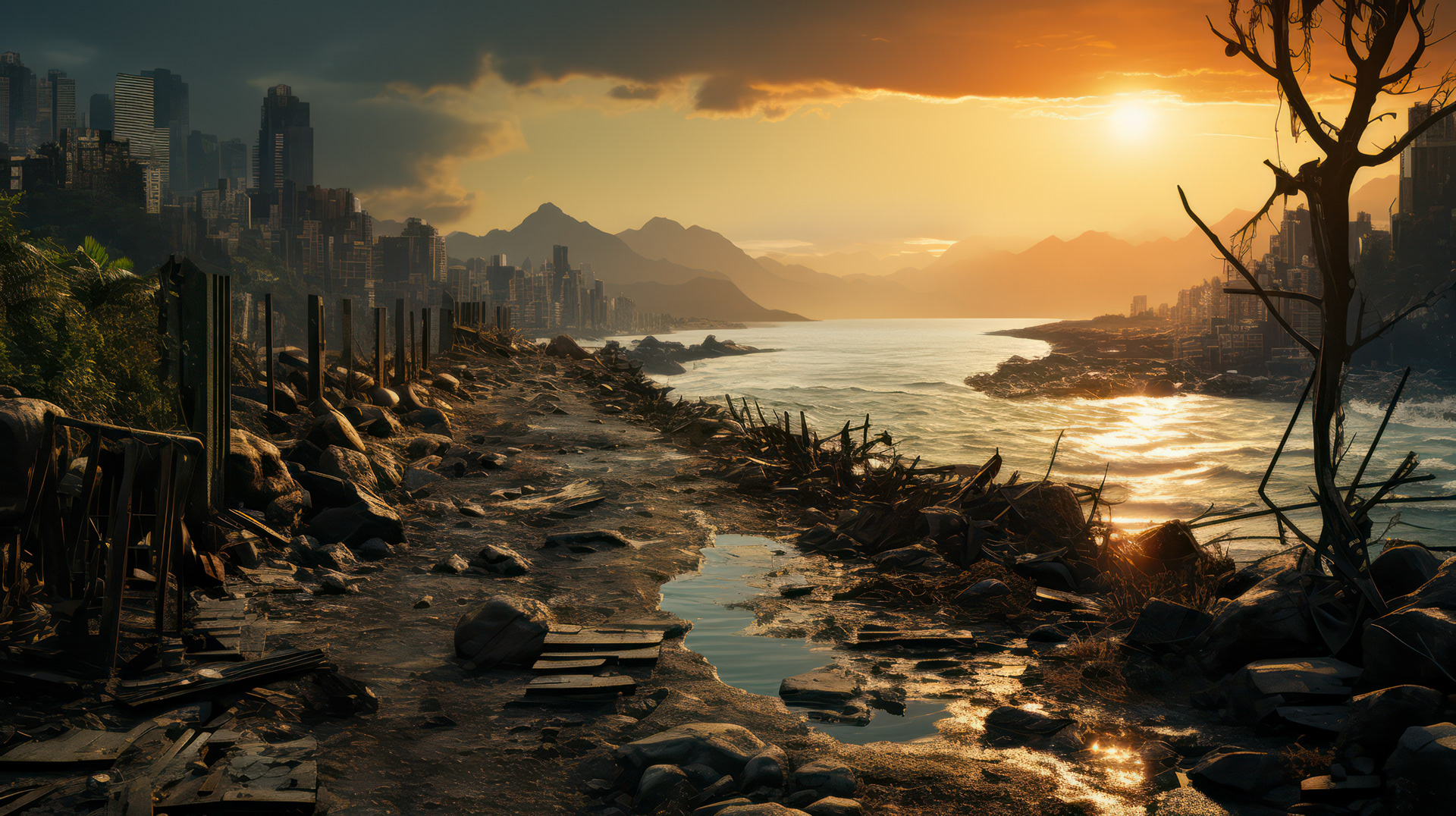
The Dance of Time: Reflections from Sugarloaf Mountain
Ascending the peak of Sugarloaf Mountain, or Pão de Açúcar as it was locally known, I was greeted with a panoramic view that encapsulated the dichotomy of Rio's past and present. The granite peak, rising 396 meters above the harbour, had silently observed the city's ever-changing tapestry. From its vantage point, the dance of time was evident in every nook and cranny of the sprawling city below.
The cable car, which had once ferried eager tourists to the summit, lay abandoned. Its once gleaming structure was now rusted, with vines and flora slowly reclaiming it. The juxtaposition of nature's reclaiming power against human-made marvels was a recurring theme in this post-apocalyptic Rio.
From atop Sugarloaf, the vast expanse of the Atlantic Ocean stretched endlessly, its azure waters shimmering under the sun. With their rhythmic ebb and flow, the waves were in sync with the pulse of time itself. They whispered tales of explorers who had once navigated these waters, of indigenous tribes who had revered this land, and of a modern civilization that had soared to great heights only to be humbled by the forces of nature.
The concept of time was intriguing and humbling, especially from such a vantage point. In the universe's grand scheme, human existence is a fleeting moment. Civilizations rise and fall, landscapes transform, yet the cosmic dance continues. The second law of thermodynamics, which speaks of the inevitable increase in entropy, was playing out in real time. The order and structure that humans had meticulously built gave way to the randomness and chaos of nature.
Yet, amidst this seemingly bleak landscape, there was hope and wonder. The resilience of nature, its ability to adapt and evolve, was evident everywhere. From the resilient flora that now adorned the city's landmarks to the fauna that had reclaimed the streets, life was finding a way.
Sitting atop Sugarloaf, with the cool breeze caressing my face, I pondered the cyclical nature of existence. The rise and fall of empires, the innovations and explorations, and the inevitable return to the basics. Rio's juxtaposition of past glory and present desolation was a microcosm of this cosmic dance. It served as a poignant reminder that in the hop of time, every step, every leap, and every fall is but a part of the grand choreography of the universe.
The Dance of Destiny: Tijuca Forest's Timeless Tales
Venturing into the heart of the Tijuca Forest, the world's largest urban rainforest, was like stepping into a time capsule. This lush expanse, spanning over 32 square kilometres, had always been a testament to nature's resilience and the foresight of those who sought to preserve it.
The forest, cleared initially in the 18th century for coffee plantations, was later replanted in the 19th century in a monumental reforestation effort led by Emperor Dom Pedro II. This act of restoration, driven by the need to secure Rio's water supply, was a pioneering example of environmental conservation.
As I meandered through the dense foliage, the sounds of the forest enveloped me. The chirping of birds, the distant roar of waterfalls, and the subtle hum of insects created a symphony of life. Every tree, every leaf, and every creature seemed to be in harmony, undisturbed by the entropy that had reshaped the city.
Yet, the forest bore subtle signs of the time-altered Rio. Some of the ancient trees, with their sprawling roots and towering canopies, showed signs of stress and decay. Streams and waterfalls, which had once flowed with crystal-clear water, were now tinged with sediment, a reminder of the landslides that had reshaped the landscape.
Amidst the green expanse, relics of human history peeked through. Ruins of old mansions, once owned by coffee barons, lay hidden beneath the overgrowth. These structures, with their faded frescoes and moss-covered walls, whispered tales of a bygone era of luxury, ambition, and the ever-changing dance of destiny.
Sitting by a serene lagoon, with the forest's canopy shielding me from the outside world, I reflected on the cyclical nature of existence. The Tijuca Forest's history of destruction and rejuvenation was a living testament to the power of the soul and the human spirit. It served as a reminder that even in the face of adversity, life finds a way, adapting, evolving, and thriving.
As the shadows lengthened and the forest's nocturnal inhabitants began to stir, I felt gratitude. The Tijuca Forest, with its timeless tales, offered a glimpse into the dance of destiny, where the past, present, and future converge, creating a tapestry of memories, dreams, and hope.
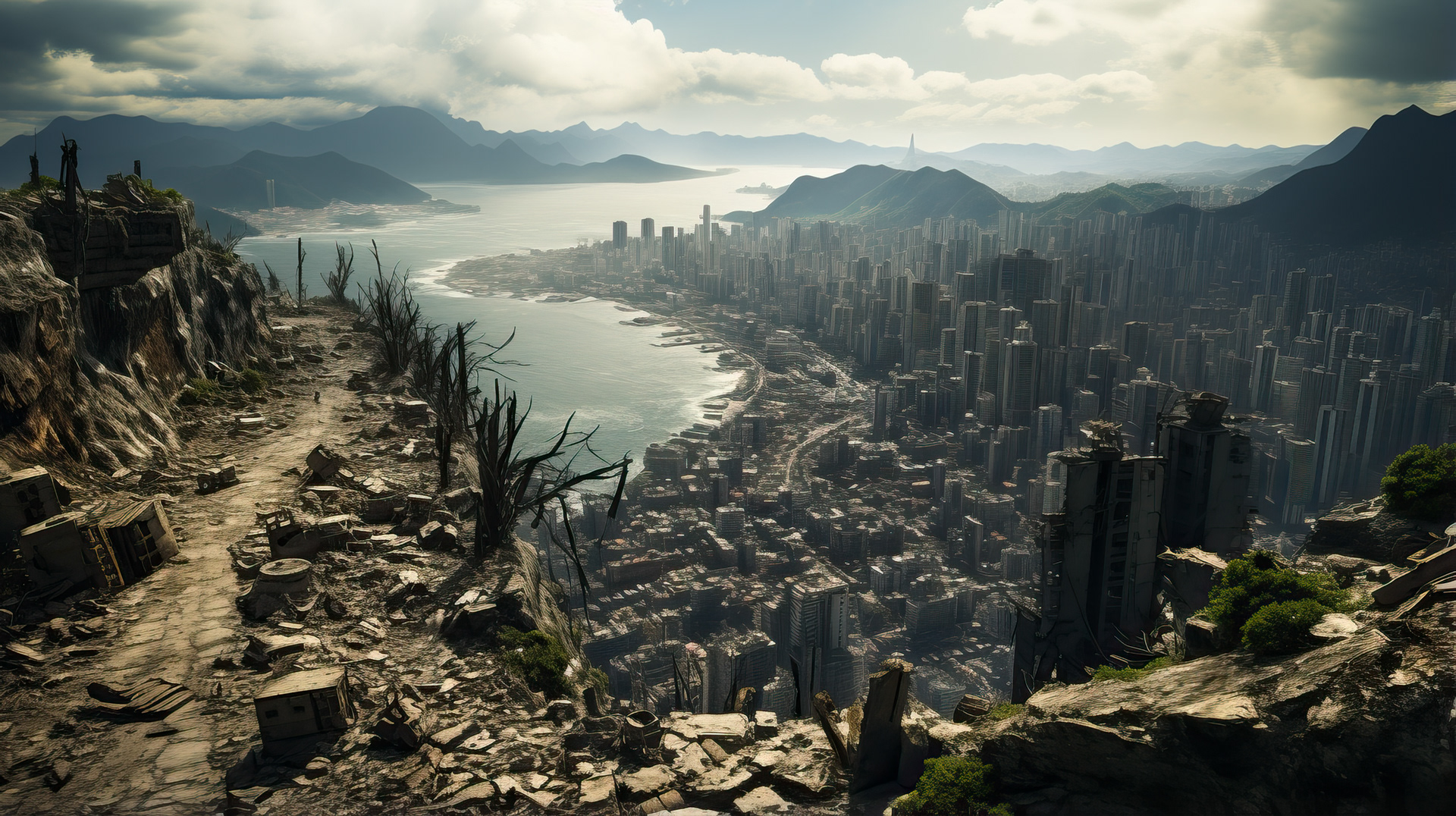
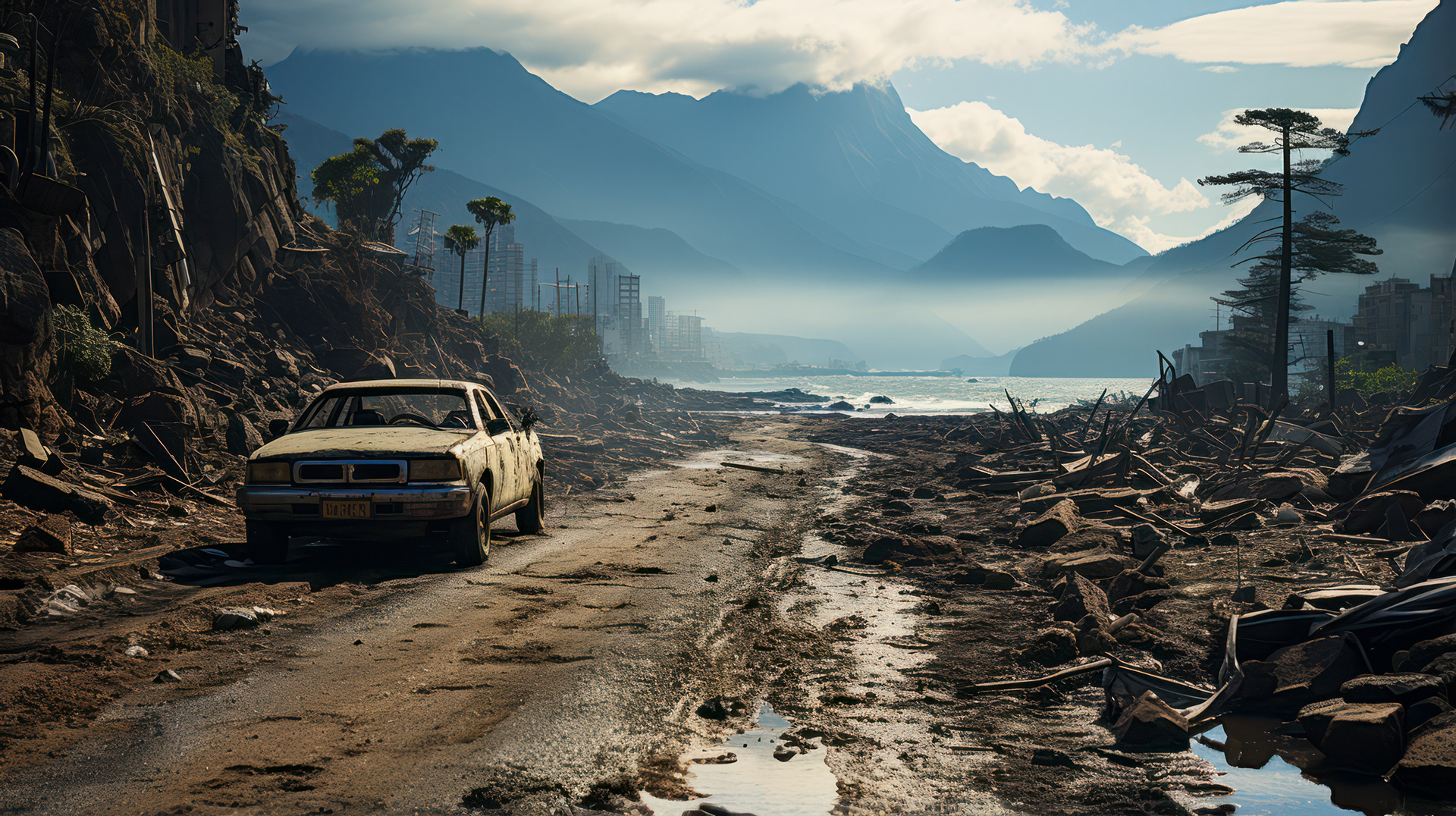
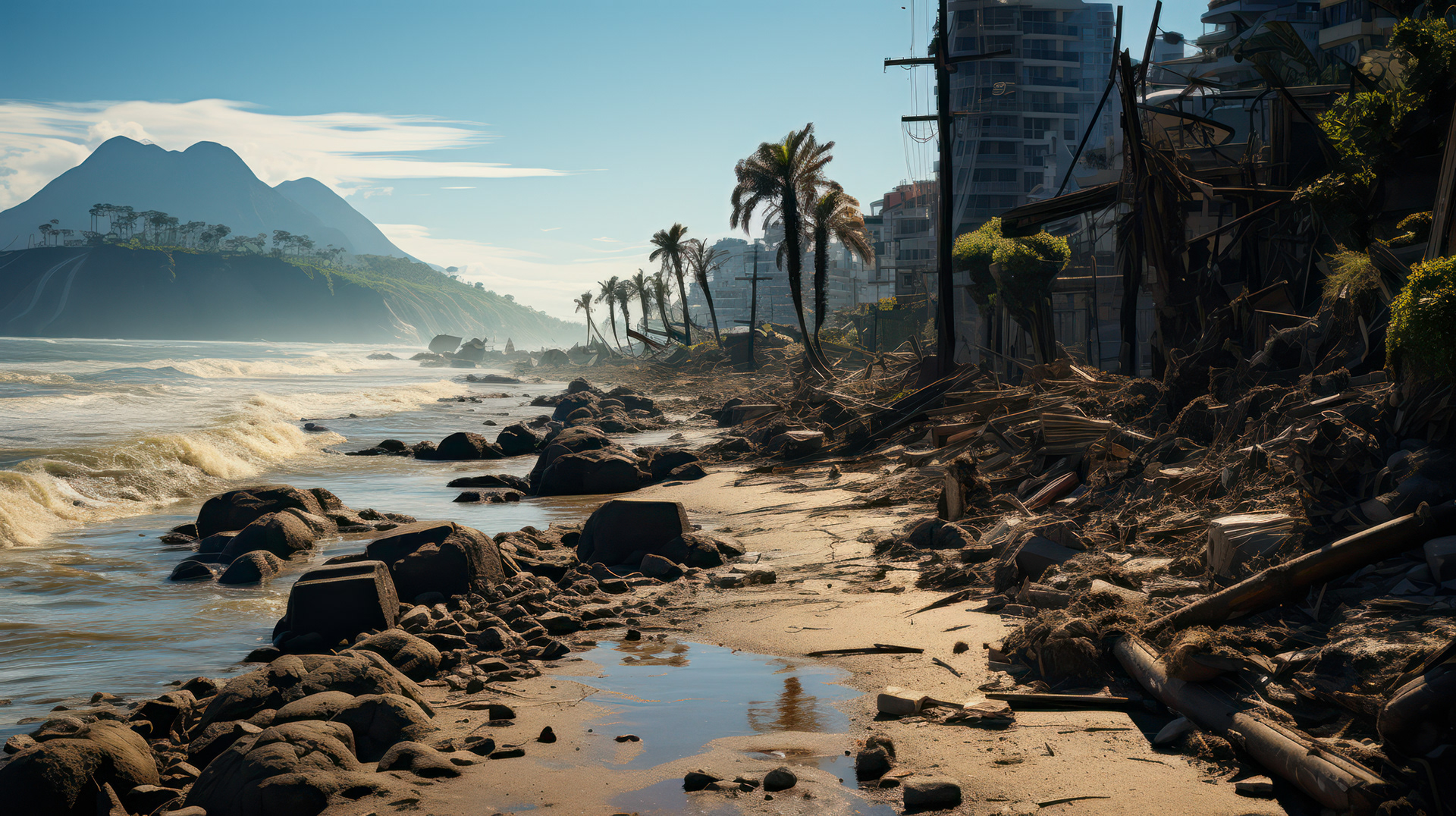
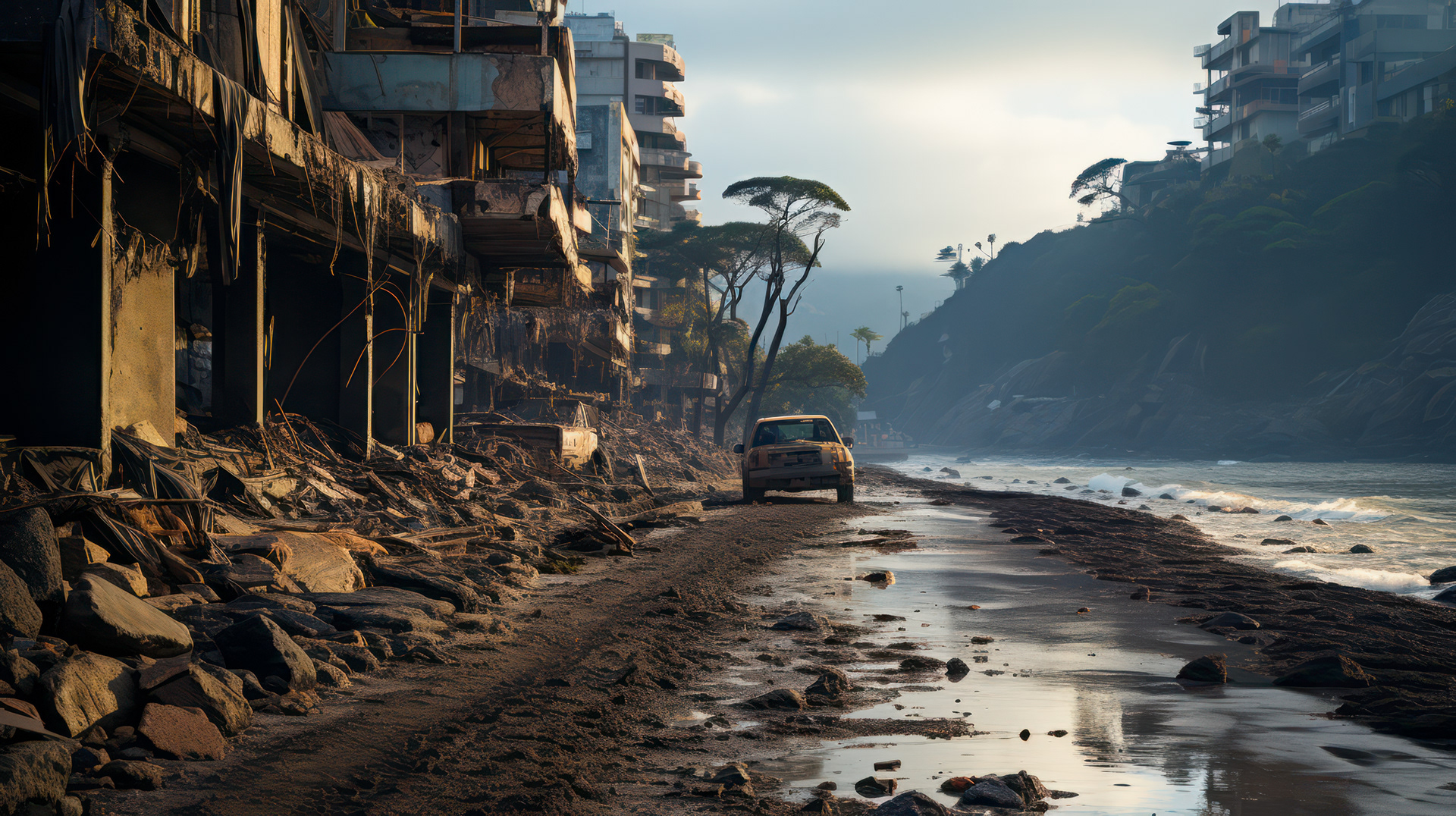
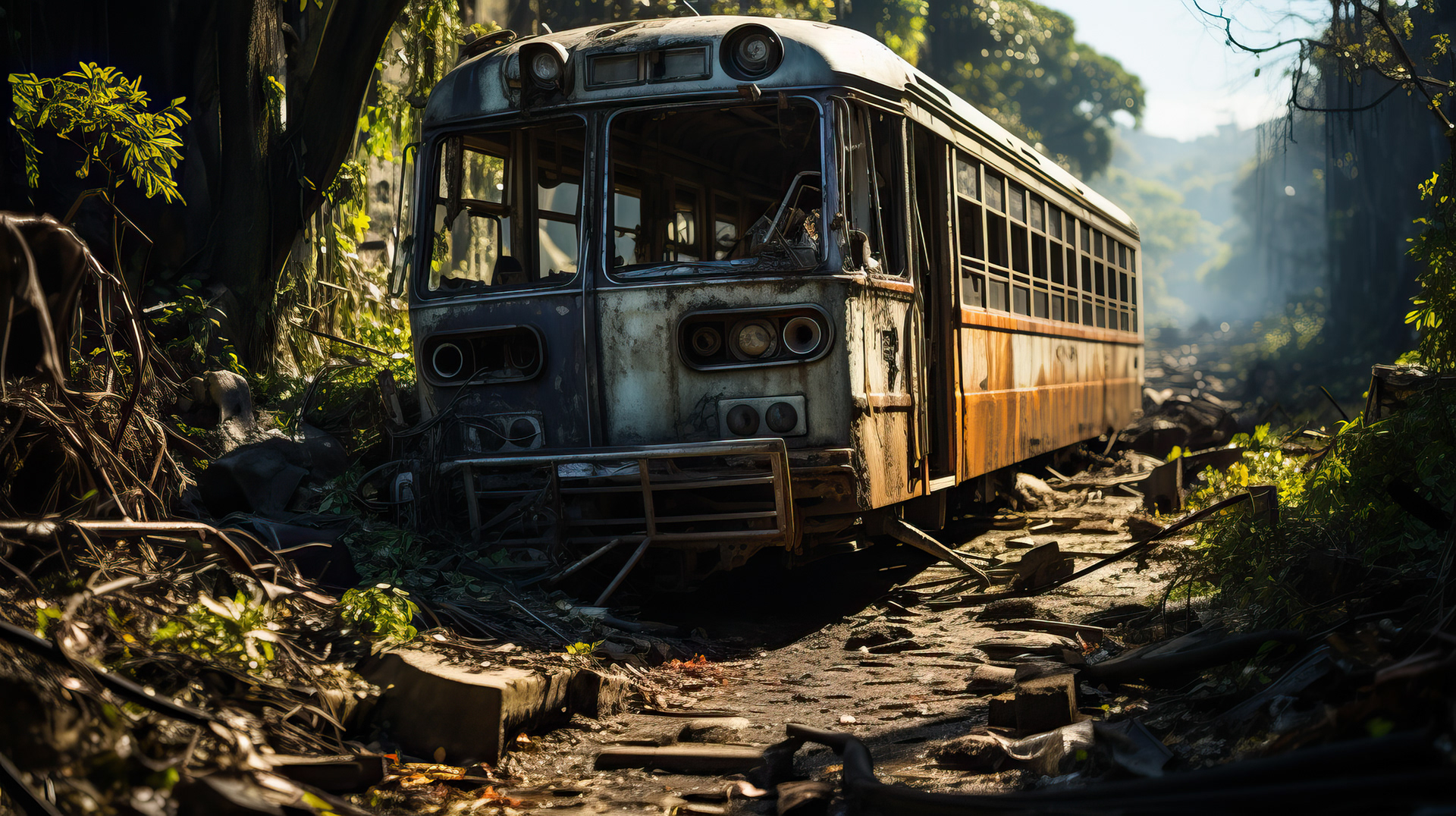

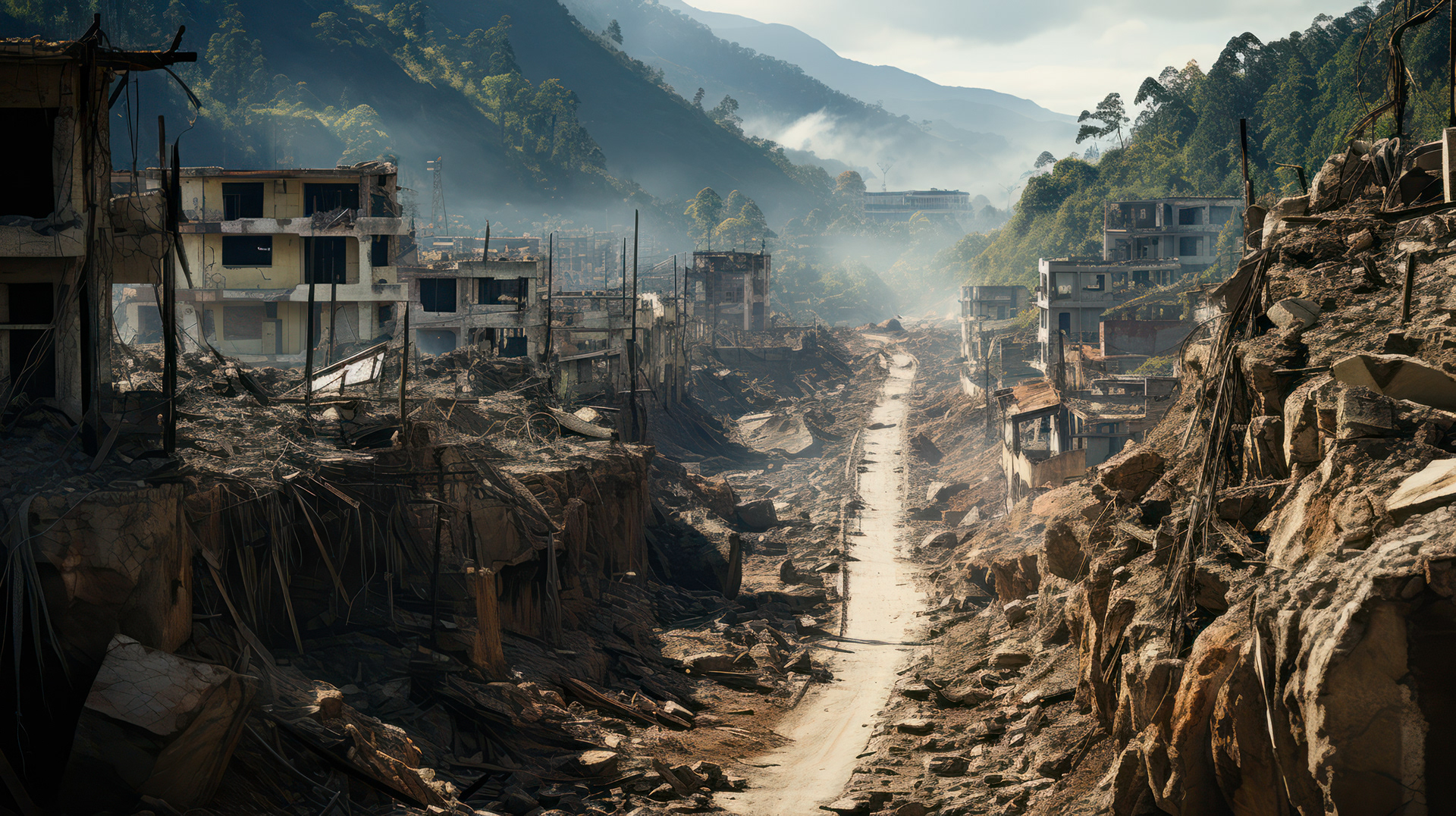

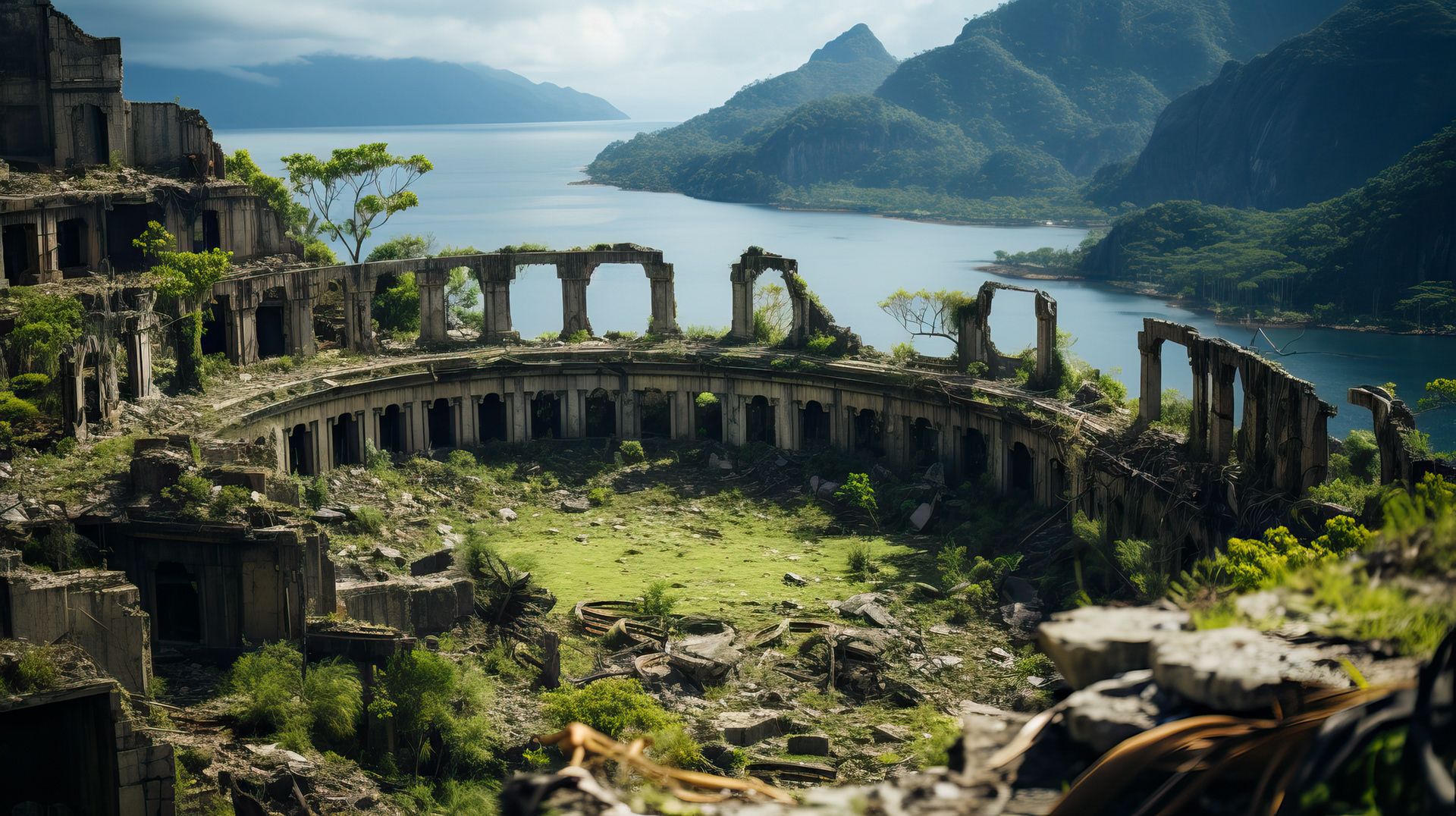
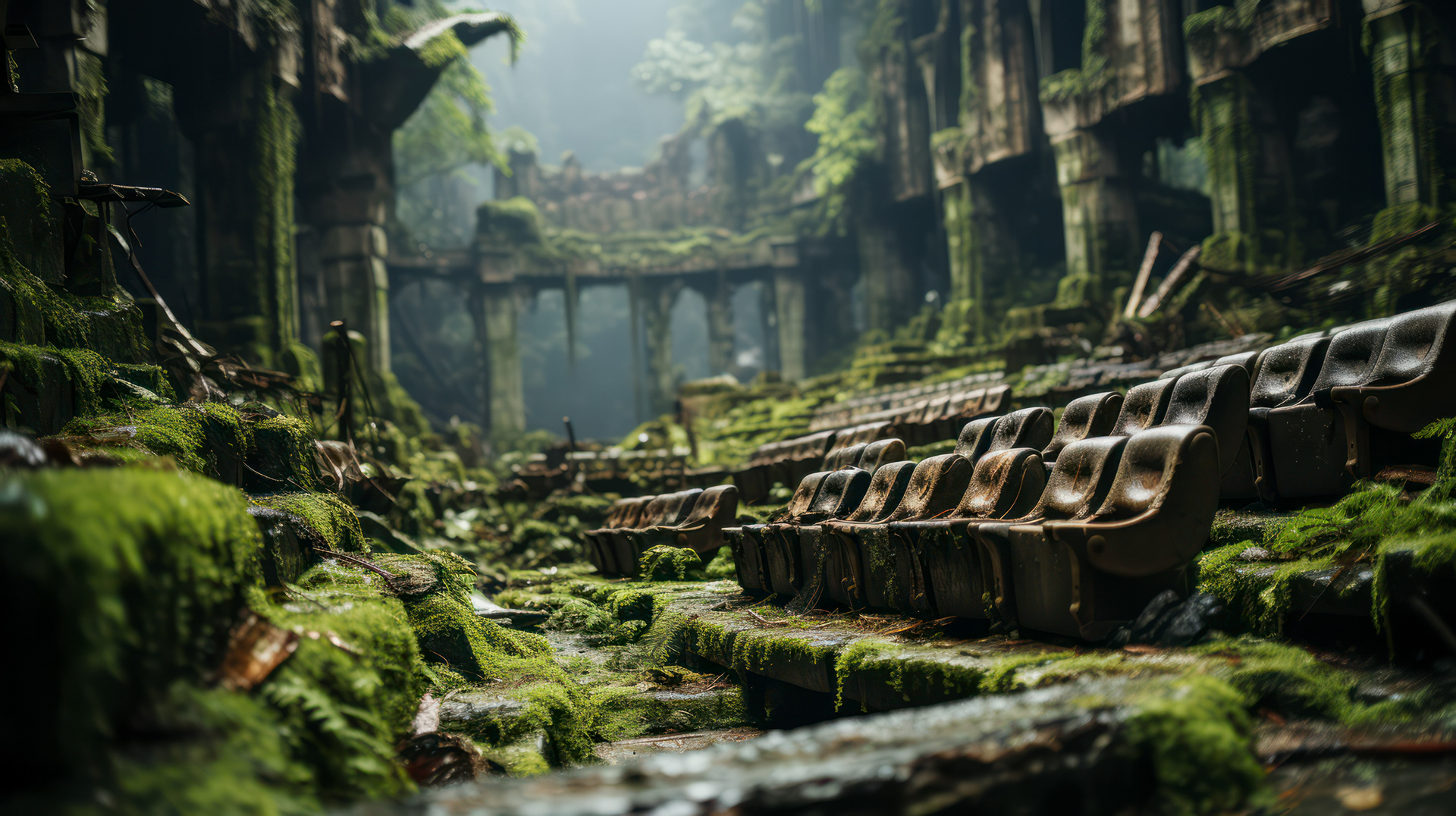
Echoes of the Future: Lessons from a Time-Altered Rio
As my exploration of post-apocalyptic Rio neared its end, I found myself atop Sugarloaf Mountain, or Pão de Açúcar. The panoramic views from this granite peak had always been breathtaking, offering a bird's-eye view of the city's sprawling landscape. But now, the vista was a blend of nature's raw beauty and the haunting remnants of a once-thriving metropolis.
From this vantage point, the full impact of the entropy unleashed by time travel was evident. The city's iconic landmarks, from the Christ the Redeemer statue to the winding streets of Santa Teresa, bore the scars of landslides, floods, and decay. The beaches, once teeming with life, lay deserted, their golden sands stretching endlessly towards the horizon. The once bustling harbor, with its ships and boats, was now a vast expanse of still water, reflecting the muted hues of the setting sun.
Yet, amidst the desolation, there was a profound sense of serenity. The sounds of nature, from the chirping of birds to the gentle rustle of leaves, filled the air. It was as if the Earth, having endured the chaos and destruction, was now at peace, healing and rejuvenating.
